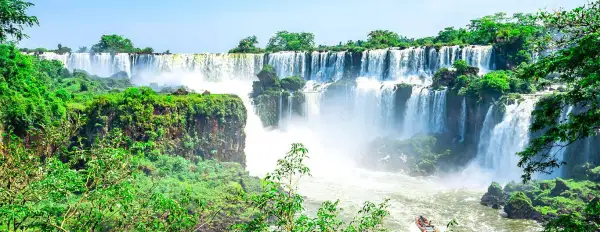Tourcode: CL3
- Overview
- Info & Inclusions
- Itinerary
- Map & Hotels
- Photos
- Dates & Prices
- Max Group Size 18
- Thundering Iguazu Falls
- Opulent Buenos Aires: "Paris of the South"
- Beagle Channel Cruise
- Perito Moreno & Uppsala Glaciers
- Exploring Torres del Paine National Park
- Singles friendly (view options for single travellers)
A perpetual reminder that it was once one of the richest countries in the world, the grand public buildings and palaces of Buenos Aires continue to stand proudly centuries after their construction, adding an air of stateliness to the colourful and varied architecture around the city.
Leaving the fabulous city, we travel south to Patagonia, stopping off in various fascinating historic towns along the way, and seek to get face-to-face with spectacular wildlife that can normally only be seen in zoos, such as whales, elephant seals, sea lions and penguins.
Some of the most dramatic sceneries in the world are to be found in Patagonia, and we pay a visit to arguably the finest national park in South America, Chile's Torres del Paine National Park, before checking out the bustling capital, Santiago, and spending time in numerous other places of interest.
- Breakfast and most dinners (hotels & local restaurants) daily
- Some lunches.
- All transport, accommodation, sightseeing and entrance fees for sites noted as 'visited' in the detailed itinerary. Gratuities for local guides, drivers, restaurant staff, porters.
- Domestic flights via local scheduled carriers as per the itinerary.
- Airport transfers for land & air customers arriving / departing on tour dates.
- International airfare to/from the tour.
- Tour Leader gratuities, most lunches, drinks, personal items (phone, laundry, etc), international (if applicable) and domestic air taxes, visa fees / departure taxes, excursions referenced as 'optional'.
- Airport transfers for Land Only customers.
- Our post-reservation trip notes offer further guidance on optional meal costs and shopping.
- Seasonality and Weather:
Weather conditions can vary greatly from place to place. Most of our time is spent in the south where conditions can be very changeable at any time of year. We visit in the Austral summer (Nov-Mar), when Buenos Aires, Iguazu and Santiago are hot and Patagonia is at its warmest. That said you must be prepared for cold, windy, possibly rainy conditions. November and March tend to be less windy than mid-summer (Jan), which can also be relatively busy. - Transport and Travel Conditions:
Ground transport by private air-conditioned motor coach, 24-36 seats depending on ultimate group size (see 'group size'). Though we will have some full bus days, road travel is not particularly arduous as roads are generally in good condition, though a little winding on some stretches. Numerous optional walking opportunities and walking tours on uneven surfaces. Internal flights via domestic carriers.
Our difficulty "Level 1" rating for this trip refers to the comfort of our transport and accommodation and the lack of physicality in terms of walking. That said, this is a busy program with lots of moving around and full days of travel and sightseeing. You must also be prepared for the possibility of some early starts, walks at various points of interest and some short walks to dinner. Our sightseeing in towns and cities, as well as national parks, are also conducted on foot at a leisurely pace. Though we try to minimize long road journeys by utilizing internal air connections, we still have some full days of travel. Related to air travel, you must be prepared to manage your own luggage at airports. This tour does not travel to any region considered "high altitude."
Am I suitable for this tour? Please refer to our self-assessment form - Activity Level: 1
No particular physical activity is involved other than town/city walks and short walks to dinners and sites of interest, some of which are large.
To learn more about the Activity levels, please visit our tour styles page. - Accommodation:
Well-located, air-conditioned / heated, mid-range hotels and inns (3-star) used throughout. All hotels have en suite toilet and bath, though some may have shower only. Porter service is usually available (see 'inclusions') though you should be independent with your luggage, especially at airports. Single rooms are limited and likely smaller than twins. - Staff and Support:
Tour Leader and local step-on guides, driver. Local guide only on Iguazu extension with fewer than 6 travellers. - Group Size:
Maximum 18 plus Tour Leader
- Day 1:Arrival in Buenos AiresArrival in Buenos Aires.
Nearly 40% of the country's 33 million citizens live in Gran Buenos Aires (Greater Buenos Aires), which at first makes the city almost as imposing as New York or London. However, after a brief orientation you will find that the compact city centre is accessible and easily explored on foot, by bus, taxi and underground.
Overnight in Buenos Aires.
Included Meal(s): Dinner, if required - Day 2:Buenos Aires - Fly to Iguazu FallsThis morning we'll prepare for a dramatic change of scenery, heading to the airport for a roughly two-hour flight that will take us to Iguazu Falls. Once we arrive and settle into our hotel, there will be some time to relax and enjoy lunch before the afternoon's main focus.
This afternoon our attention turns to a guided exploration of the falls from the Argentine side, specifically navigating the upper balconies. We'll arrive at the "Hito de las Tres Fronteras", a rather significant spot where the River Iguazu converges with the deeper Parana River, marking the point where Argentina, Brazil, and Paraguay meet. This area is more than just a border; it’s a living ecosystem. The national park here is home to a remarkable array of life, with over 21,000 plant species and 400 bird species identified within its boundaries.
The sheer scale of the waterfalls is something to observe. Approximately 1700 cubic metres (1,853 cubic yards) of water per second plunge from a height of 70 metres (230 feet) across 275 individual falls, with the majority located on the Argentine side. As we walk along the upper balconies, we'll gain a perspective that allows us to see how these countless cascades interweave. A particularly striking feature is "La Garganta del Diablo" (The Devil's Throat), a gully on the frontier with Brazil that measures about 150 metres (490 feet) wide and 700 metres (2,290 feet) long. The volume of water thundering into this chasm is truly breathtaking.
Overnight at Iguazu Falls.
Included Meal(s): Breakfast and Dinner - Day 3:Iguazu Falls - Fly to Buenos AiresYou have a half-day free to revisit the paths along the upper and lower parts of the falls (optional cost) and the path that goes along the river from the observation point of the Bosetti Falls to the quay. The plunging falls throw a fine drizzle up to 30 m (98 feet) into the air, weaving countless rainbows in the sun. Be sure to take rain-proof clothing. Your Tour Leader/guide will help you plan your morning.
You can also take an optional boat ride to the base of the falls (extra cost), or the local bus to Iguazu Town where you can explore and observe where Argentine, Brazil, and Paraguay come together. You will need to be back in the hotel this afternoon to be ready for our transfer to the airport; please verify the check-out time from the hotel reception desk.
Later this afternoon we fly to Buenos Aires and transfer to our hotel.
Overnight in Buenos Aires.
Included Meal(s): Breakfast and Dinner - Day 4:Buenos Aires: City TourToday we see the sights of this cosmopolitan city. In the early part of the 20th century, Argentina was one of the richest countries in the world. The grand public buildings of Buenos Aires reflect this opulent era. The city is known as the "Paris of South America" because of its wide boulevards and European-style architecture. Buenos Aires was founded for the second time in 1580 by Juan de Garay, just north of Mendoza's encampment. In accordance with Spanish law, he laid out the large Plaza del Fuerte (Fortress Plaza). It acquired its present name of Plaza de Mayo after the month of revolution in 1810. Our tour focuses on the major public buildings.
Catedral Metropolitana, built on the sight of the original colonial church was not completed until 1827. Not only is it considered a major religious landmark, but also a historic site of great importance. Here lies the tomb of Jose de San Martin, the man who (along with Simon Bolivar) liberated South America from Spanish rule in the early 1800's. The Plaza de Mayo is also home to Museo del Cabildo, the Presidential Palace (Casa Rosada), and the National Congress (Palacio del Congreso).
We also visit the Recoleta Cemetery where Buenos Aires' richest citizens are buried in magnificent marble tombs elaborately decorated with statues. The most internationally-famous person buried here is "Evita" Peron. While in BA, we will also visit La Boca neighbourhood, so named for its position at "the mouth" of the Riachuelo, and its role as the port of call for thousands of immigrants from Italy, Spain, and other European countries. Those settlers struggled, starved, hoped, and celebrated in this rough-and-tumble barrio. Today, one of the most photogenic and colourful parts of Buenos Aires, La Boca is the domain of the working class, bohemian artists, rabid soccer fans, and tango artists.
Ask your Tour Leader about the possibility of seeing an optional Tango Show this evening.
Overnight in Buenos Aires.
Included Meal(s): Breakfast and Dinner - Day 5:Buenos Aires: ContinuedToday we have a half-day WALKING tour.
Our first stop is the Centro Naval, one of the city's most exquisite buildings and a masterpiece of cast stone architecture. It's not generally open to the public, but sometimes they let you into the circular lobby.
The Kavanagh Building, at the time of its construction in 1936, was the tallest building in South America, standing at about 120 m (400 ft) with over 30 stories. Designed as a residential structure, it took more than 16 years to sell the apartments in this Art Deco building.
Palacio Paz is perhaps the most beautiful of the Beaux Arts mansions in Buenos Aires; the Circulo Militar looks plucked from the Loire Valley. It was the home of the Paz family and took almost 12 years to build; the patriarch who commissioned it died waiting.
The General Jose de San Martin Monument celebrates General Jose de San Martin, who battled against Spain in the wars of independence and is known as the founder of the Argentine nation. The Palacio San Martin is another of the grand mansions that line Plaza San Martin, this was the home of the powerful Anchorenas family whose prestige dated to colonial times in Argentina. The Islas Malvinas-Falkland Islands Memorial honors the more than 700 Argentines who died in the war over the Islas Malvinas/Falkland Islands chain in the brief war with Great Britain in early 1982.
The Torre Monumental (British Clock Tower) is a 1916 gift from the British community in Buenos Aires, along with all other things British, was renamed in response to the Islas Malvinas/Falkland Islands War and is called the Argentine Big Ben by some. Decorated with British royal imperial symbols, the base was partly destroyed by an angry mob during an Islas Malvinas-Falkland Islands memorial service. Inside the tower you'll find a small Buenos Aires City Tourism Information Office.
Retiro Station was opened in 1915 and was built with British technological assistance. Four British architects designed it, and the steel structure was made in Liverpool, England, and shipped to Argentina to be assembled.
Our tour ends in the Galerias Pacifico in time for your lunch break. This is the most famous shopping mall in Buenos Aires, opened in 1891. The building was designed to recall the Galleria Vittorio Emanuele II in Milan, with its long halls, glass cupola, and several tiers of shops.
Balance of the day at leisure to explore at your own pace.
Overnight in Buenos Aires.
Included Meal(s): Breakfast and Dinner - Day 6:Buenos Aires - Fly to BarilocheA direct flight from Buenos Aires brings us to Bariloche, located in the heart of the Lake District. The Nahuel Huapi National Park extends over 750,000 hectares, of which 330,000 is a National Reserve. Situated in the southwest of Neuquen Province and northwest of Rio Negro, it stretches from the Patagonian steppes to the high Andes. On account of abundant rainfall and summer melt from snowfields and glaciers, there is a great number of lakes and also rivers that flow either to the Atlantic or the Pacific oceans. Lake Nahuel Huapi, covering an area of 60,000 hectares, is the largest in the area.
This afternoon we visit the Francisco P. Moreno Patagonian Museum, inaugurated by National Parks in 1940. It is named after the famous explorer of the Andes and the Patagonian rivers, who donated the lands that were later transformed by the government into the first national park in Argentina. It has halls specializing in natural science, ethnography, pre-history and local and regional history. It also has a library and a bookstore.
Bariloche has a very strong Central European influence; most of the first settlers were of Swiss, German, or Northern Italian origin. These people gave the city its European style, with Swiss chalets, ceramics, chocolates, and neat shop windows. However something tells you that you are not in Europe; boats are seldom seen in the huge Nahuel Huapi Lake, the roads are swallowed up in the wilderness as soon as they leave the city and at night, there are no lights on the opposite shore of the lake.
You will have time to explore the lakeside and to visit Bariloche town with it's chocolate shops and excellent visitors' centre.
Overnight in the Bariloche area.
Included Meal(s): Breakfast and Dinner - Day 7:Bariloche Area: Small CircuitToday we have the classic half-day tour of the Bariloche region. We will get a general overview of the surrounding area along a 60 Km (40 mi) partial loop excursion, all on a paved road. Our outing heads westward from Bariloche on the highway to Llao Llao along the southern shore of Lake Nahuel Huapi. At Km 8, the road passes Playa Bonita, a small harbour and popular beach. Cerro Campanario, the Belltower Hill, is at Km 18 (mile 12), where our bus may stop on the outward leg or when returning. The view from the top of this hill, reached after a seven minute chairlift ride, is the highlight of the trip. The Catedral Ski Village, at the base of the ski slopes, and part of the city of Bariloche, are visible from this spectacular 360 degree look-out.
The tour continues toward St Eduard's chapel and the Llao Llao Hotel. It is after passing the hotel's golf course, at the 100 inch yearly rainfall boundary, that the Valdivian Rain Forest begins. This is a temperate rain forest, with vines canes and lush vegetation. Our tour continues through a thick beech forest surrounding the western Moreno Lake passing by the base of Lopez Mountain, a sheer 3650 m (12,000 ft) face of rock.
We'll have a short stop further along the road for a breathtaking view high above Moreno Lake, the Puerto Panuelo Harbour, Victoria Island and smaller islands on the lake. On the return trip, the road crosses the bridge between the Moreno lakes and then joins the main road back to Bariloche.
Balance of the day at leisure.
Overnight in the Bariloche area.
Included Meal(s): Breakfast and Dinner - Day 8:Bariloche, Argentina - Lake Crossing - Puerto Varas, ChileThe Andean Lakes Crossing is the most scenic way to travel from Argentina to Chile. This spectacular crossing of the Andes takes us through lakes and mountain passes from Bariloche to Puerto Varas, and occurs in a very well-orchestrated combination of boat and bus. Our luggage is handled for us -- you just sit back and enjoy the scenery.
After breakfast we travel by bus to Puerto Panuelo, where we'll board a ship to navigate across the serene waters to Puerto Blest Port. As we arrive at 11:30, we'll be treated to picturesque views of the surrounding mountains and lakes. After a short break, we'll board a bus to Puerto Alegre Port, where we'll embark on another scenic boat ride.
The journey takes you across the border into Chile at a relatively low altitude of 976 meters (3,200 feet), allowing you to take in the stunning vistas without the strain of high-altitude travel. As you continue on to Peula, we'll board a ship to sail across Lago Todos los Santos, with weather-permitting views of the majestic Osorno Volcano and the towering mountains Puntiagudo and Tronador. The imposing presence of Volcan Osorno and Calbuco dominates the landscape, creating an unforgettable backdrop for our journey.
As the sun begins to set, we'll arrive in Puerto Varas, affectionately known as the "City of Flowers." Due to our late check-in and substantial lunch, dinner will be on your own this evening.
Overnight in Puerto Varas.
Included Meal(s): Breakfast and Lunch - Day 9:Puerto Varas - Fly to Puerto Natales - Torres del PaineToday involves a significant journey as we travel by road to Puerto Montt, a gateway city in Chile's Lakes District, from where we'll catch a flight to Puerto Natales. The flight from Puerto Montt to Puerto Natales (+/- 2 hours). Upon arrival in Puerto Natales, a small, vibrant port city often considered the "gateway to Torres del Paine," we'll continue our journey by road directly to Torres del Paine National Park. The drive from Puerto Natales to the park entrance is approximately 110 kilometres (68 miles), usually taking about 1.5 to 2 hours, offering our first glimpses of the vast Patagonian landscape.
The park itself is a UNESCO Biosphere Reserve, renowned globally for its exceptional beauty and ecological significance. As we enter, the landscape begins to unfold, revealing why it's often considered the finest national park in all of South America. The star attractions, the Torres del Paine (Towers of Paine), are truly spectacular: granite pillars that pierce the sky, soaring almost vertically more than 2,000 metres (6,500 feet) above the Patagonian plains. Their sheer scale is humbling.
However, Torres del Paine is far more than just its iconic towers. The park is a tapestry of diverse ecosystems and dramatic scenery. We'll encounter brilliant turquoise lakes, fed by glacial melt, their colours shifting with the light. Roaring waterfalls and a network of rivers and creeks crisscross the terrain, often flanked by dense forests of native lenga and ñirre trees, which burst with vibrant colours in the autumn. Beyond the forested areas, the landscape opens into sprawling glaciers, remnants of the Patagonian Ice Field, with the most famous being Glacier Grey, where immense icebergs calve into the lake. Wildlife is also abundant; we'll be keeping an eye out for guanacos gracefully grazing, Andean condors circling high above, and perhaps even an elusive puma. This incredible combination of towering peaks, serene lakes, powerful rivers, ancient forests, and expansive glaciers truly makes Torres del Paine an unequalled destination for experiencing the raw majesty of Patagonia.
Overnight at Torres del Paine.
Included Meal(s): Breakfast and Dinner - Day 10:Torres del Paine National ParkToday we spend the entire day at Torres del Paine National Park.
Some say "Paine" come from the name of an early settler. Others say the name comes from an ancient Indigenous word meaning blue -- hearkening to the intense blue of the area's lakes. Whatever the name comes from or means, this is a spectacular park, comparable to Yellowstone or Yosemite in the US. Founded in 1959, Torres del Paine takes in 180,000 ha (450,000 acres). In 1978 UNESCO gave the park World Heritage status, recognizing it as a biosphere especially worthy of international recognition.
The park is part of the Paine Massif, which lies east of the high central Andean spine. These medium high mountains emerge suddenly from the plains of the Patagonian steppes. The mountains are granite, capped by crumbly sedimentary rock that used to lie on the valley floor. Before the park was acquired by the Chilean government, it belonged to ranchers who overgrazed and also burned down forests to increase pasture area.
The park is still recovering from this devastation, but it's a chance to see what nature can do to fix itself if given a chance. The glaciers of the park are in quick retreat -- up to 17 m (56 ft) a year for the last 90 years, creating a fascinating study of plant succession and soil build-up from bare rock to forest. The flora of the park ranges from grassland to southern beech forests. Many parts of the park were too remote for the cattle ranchers and exist today in a pristine state.
The animal stars of the park are the guanacos and the rheas. Rheas are an ostrich-like bird; guanacos are wild South American cameloids, related to the domesticated llama and alpaca. Native peoples hunted both across the plains, using every part for food and sheltering hide and feathers. When the Europeans came, the guanaco were slaughtered to make way for cattle, and almost became extinct.
We will travel through the park in our coach stopping at various points of interest and scenic viewpoints. We will also have an opportunity to walk one of the many easy-going trails that afford expansive views of the mountains, glaciers, and waterfalls for which Patagonia is famous.
Overnight at Torres del Paine.
Included Meal(s): Breakfast and Dinner - Day 11:Torres del Paine, Chile - Calafate, ArgentinaToday marks another transition in our Patagonian adventure as we travel by road from Torres del Paine, making our way to El Calafate. This charming resort town, nestled on the shores of the expansive Lake Argentino, serves as our convenient base for exploring Los Glaciares National Park. The journey by road typically covers a distance of approximately 270 kilometres (167 miles) and involves crossing the border from Chile back into Argentina, a process that usually takes a few hours. As we drive, the dramatic landscapes of Patagonia continue to unfold, transitioning from the rugged peaks of Torres del Paine to the more rolling, arid steppe surrounding El Calafate.
El Calafate itself is named after a local berry, a small, dark fruit that grows in the area and is said to guarantee a return visit to Patagonia if you taste it – a delightful local legend! Historically, the town functioned as a trading post for ranchers in this remote region. However, in recent years, it has experienced significant growth, largely spurred by the influx of tourism. Despite this expansion, El Calafate retains a pleasant and welcoming atmosphere. The vibrant main street, Avenida del Libertador, is a central hub, lined with leafy trees and a colourful array of trendy shops where we might find unique souvenirs (perhaps some local crafts or even the famed calafate berry ice cream). There's also a good selection of inviting restaurants and cozy bars, offering opportunities to sample Patagonian cuisine and local beverages.
This pleasant and colourful town provides a comfortable and well-equipped base for our upcoming glacier viewing experiences in the area. It offers a balance of modern amenities within a setting that still feels connected to the wild, expansive beauty of Patagonia.
Overnight in Calafate.
Included Meal(s): Breakfast and Dinner - Day 12:Calafate: Lago Argentina Glacier CruiseToday we explore the glaciers, mountains, forests and lakes of Los Glaciares National Park on board a luxury cruise boat. We spend a full day relaxing on a stylish watercraft, taking in views of the Patagonian ice field. This morning we transfer the pier to join our cruise, which offers the best opportunity to visit the Spegazzini, Upsala, and the Perito Moreno glaciers in an intimate way.
We cruise out of the Upsala Channel toward the iceberg barrier, then to the largest glacier in the park; the Spegazzini Glacier. Continue to Puesto de las Vacas, where we will disembark and take a short guided walk through the icefields. During our journey, admire dramatic views and enjoy spectacular photo ops of the natural surroundings, including forests, glaciers, icefields, bays, and steppes.
We will then navigate toward Punta Avellaneda and Boca del Diablo to reach the Canal Spegazzini to see the glacier that bears the same name. The cruise will arrive at Puesto de Las Vacas (an extremely quiet bay in the Canal Spegazzini), where we can enjoy a guided walk with stunning panoramic views of the Spegazzini Glacier.
We continue toward Herminita Peninsula; the series of ice floes of the most varied colours and shapes, anticipates the proximity of Upsala Glacier. We will stop in front of the barrier of ice floes which at present is blocking the entrance to Canal Upsala. If the weather conditions are good we will observe the glaciers at a distance.
We continue to Canal de los Tempano to finally reach Perito Moreno Glacier. Huge icebergs on the glacier's 60 m (180 foot) high face calve and collapse into the Canal de los Tempanos as it advances about 100 m (300 feet) a year. The roar of the gigantic ice wall as it crashes into the surrounding channel is an unforgettable experience.
We'll be dropped off near the glacier where we can view it from land on a series of scenic boardwalks. We then return to Calafate by road.
NOTE: Though weather may seem fine in Calafate, the weather on the water and near the glaciers can be completely different. You should be prepared with layered clothing and a warm hat.
Late afternoon we return to Calafate.
Overnight in Calafate.
Included Meal(s): Breakfast and Dinner - Day 13:Calafate - Fly to UshuaiaToday we fly to Ushuaia on the island of Tierra del Fuego.
Ushuaia is considered the world's southernmost city. In 1520, Magellan passed through the strait that now bears his name, in search of a sea route to the spice islands of Asia. The Yahgan Indians built the fires that inspired Europeans to give this region its name -- "The Land of Fire". At first, very little attention was paid to this rocky and glacial shoreline, and its indigenous Indian population. It was not until the demise of Spain's colonial domination of the region in the late 1800's, that other Europeans began settling here. Since 1950, the town has played host to an important naval base, supporting Argentine claims in Antarctica. In 1870, the South American Missionary Society, a British-based organisation, made Ushuaia its first permanent outpost in the Fuego region.
You will have time to discover this interesting town. We suggest a visit to the old prison of Ushuaia located within the confines of the naval base. The penitentiary was constructed by the prisoners themselves between 1902 and 1920. Now this impressive complex houses the Antarctic Museum, the maritime museum, a modern art gallery as well as a restored wing of the prison, complete with cells inhabited by some of the infamous prisoners.
Overnight in Ushuaia.
Included Meal(s): Breakfast and Dinner - Day 14:Tierra del Fuego National ParkIf you are looking to connect with nature and the history of the southernmost city in the world, Tierra del Fuego National Park is the ideal place to do it.
The park protects 68,909 hectares and is the only one in Argentina that combines marine, forest and mountain environments giving shape to the sea coast, lakes, valleys, extensive peat bogs and magnificent forests dominated by trees such as lengas, guindos and ñires. All these environments form a unique scenery with the purest air you can breathe. Here you will find exuberant and diverse landscapes, inhabited by birds such as the picturesque cauquén marino, the steamer duck or the black-browed albatross. As you walk along the trails it is normal to come across grey and red foxes, and to hear the "tac, tac, tac" of a Magellanic woodpecker.
This place also features the history of the Yámanas, the first inhabitants of these lands. Paying attention, you can find mounds of mussel shells, known as "concheros" or shell middens that remind us that these lands have been inhabited for more than 10,000 years.
Our drive to the national park is short and scenic. We’ll pass the world’s southernmost golf course and make a stop at Escondido beach and its famous post office, where you can purchase postcards/stamps and send them on their long way homeward. At Lapatoia Bay we reach the southern end of the Pan-American Highway, which starts in Alaska and runs all the way down through Canada, the USA, Central and South America.
We’ll also stop at Lago Roca (Lake Acigami), the main freshwater body of Tierra del Fuego National Park, which extends through Argentine and Chilean territory. We’ll enjoy a nice easy walk along the shore, ending up at the Alakush Visitor Center, which features a restaurant, gift shop, and an interpretive room with information about the park and the first inhabitants who resided on the island.
Overnight in Ushuaia.
Included Meal(s): Breakfast and Dinner - Day 15:Ushuaia: Beagle Channel CruiseToday, weather-permitting, we include a cruise on the Beagle Channel. Running through the Tierra del Fuego archipelago, the Beagle Channel is a scenic and wonderfully calm strait named in 1830 after a charting voyage by the HMS Beagle—the ship that later became famous for carrying English evolutionalry biologist Charles Darwin on his five-year journey of discovery. The island of Tierra del Fuego is divided between Argentina and Chile and the Beagle Channel forms part of the border between the two countries.
In addition to spectacular scenery, we should see many species of marine mammals and birds, including a penguin colony -- the actual presence of penguins can rely on seasonality and recent conditions -- so no promises!
Later you'll have time to discover this interesting town, including the previously mentioned old prison of Ushuaia and Antarctic Museum if not accomplished earlier.
Overnight in Ushuaia.
Included Meal(s): Breakfast and Dinner - Day 16:Ushuaia - Fly to MendozaThis morning our journey takes a new direction as we prepare to fly to Mendoza.
Situated in the pre-mountainous Andes, Mendoza is widely regarded as one of Argentina's largest and most beautiful cities. As we make our way from the airport into the city centre, we'll immediately notice some of its defining characteristics: the pervasive presence of tree-lined streets, lush gardens, inviting pathways, and the distinctive sight of trolleybuses quietly moving through the city. These elements combine to create a remarkably green and pleasant urban environment, particularly striking for a city located in a semi-arid region at the foothills of the Andes.
Mendoza is much more than just a beautiful city; it's the undisputed heart of viticulture in Argentina, renowned globally for its world-class wines, especially Malbec. The surrounding countryside is a vast expanse of vineyards, meticulously irrigated by a network of canals that ingeniously draw meltwater from the Andes. This unique system has transformed the desert landscape into a fertile oasis, allowing for the cultivation of grapes and olives that thrive in the abundant sunshine. Beyond wine, Mendoza is also a major hub for adventure and mountain sports. Its proximity to the towering Andes makes it an ideal starting point for activities like skiing in winter, challenging mountain climbing expeditions, and exhilarating rafting trips on the Mendoza River.
Overnight in Mendoza.
Included Meal(s): Breakfast and Dinner - Day 17:Mendoza: Town TourToday, we'll immerse ourselves in Mendoza, a city that stands out as one of Argentina's most charming capitals. It enjoys a dry and sunny climate, which contributes to its distinct atmosphere. The urban design here is rather unique, characterized by its spacious streets, broad sidewalks shaded by mature trees, and a generally low-rise construction that allows for ample open green areas. A particularly fascinating feature are the numerous irrigation channels, or acequias, that run alongside many streets. This city, built in a semi-arid region, owes its lushness and development to a sophisticated irrigation system that has harnessed meltwater from the Andes for centuries.
Our morning will be dedicated to a half-day guided tour, offering us a deeper insight into Mendoza's history and character. We'll pass by the impressive Government House and explore General San Martín Park, an expansive and beautifully designed green oasis that is both the oldest and largest park in Mendoza. It's a testament to the city's commitment to public green spaces.
Our tour will also take us to the city's central squares, each with its own distinct personality. We'll explore Independence Square, the main plaza, often a bustling hub of activity. From there, we'll visit Plaza España, a square noted for its intricate tile mosaics and sculptures that elegantly pay homage to Spanish culture, reflecting the deep historical ties between Argentina and Spain. Finally, we'll come to Plaza del Castillo, more formally known as Plaza Pedro del Castillo, which holds a special historical significance. Here, a museum built directly on the foundations of the old Town Hall offers a tangible link to Mendoza's past, with excavations, old photographs, and artefacts providing evidence of the devastating earthquake that severely damaged the city in 1861, just three centuries after its foundation.
The balance of the day will be at leisure, allowing you to further enjoy Mendoza at your own pace.
Overnight in Mendoza.
Included Meal(s): Breakfast and Dinner - Day 18:Mendoza Wine Tour - Fly to Santiago, ChileThe Mendoza area is the fastest growing wine producing region in the world and it is Argentina's most popular spot to travel to for wine tours and tastings. Located in the shadow of Mt Aconcagua, the vineyards in the Mendoza wine region are at one of the highest elevations in the world. Receiving little rainfall per year, the vines are irrigated with runoff from melted glaciers in the Andes. Primarily, it is Malbec that is grown, a grape that thrives in the high altitude, arid region of Mendoza. Other varietals include Tempranillo, Cabernet Sauvignon, and Chardonnay.
Today we will visit two wineries for which the region is famous. As quality, season, and customer feedback can vary, we do not pre-determine which properties we will be visiting far in advance. Your Tour Leader will advise on today's activities in greater detail while on tour.
Today we include lunch at a wine estate (instead of dinner). If available, we may also be able to enjoy an olive oil tasting.
Later this afternoon we transfer to the airport for our flight to Santiago, Chile’s capital and largest city, located in a valley surrounded by the snow-capped Andes and the Chilean Coast Range. Because our flight is likely over the dinner hour, and due to our substantial lunch, we do not include a group dinner this evening (most travellers grab something light at the airport as we wait to board).
Overnight in Santiago.
Included Meal(s): Breakfast and Lunch - Day 19:Santiago & ValparaisoToday we travel to central Chile's Pacific coast and visit the colonial city of Valparaiso, an excellent example of late 19th-century urban and architectural development in Latin America. The route to Valparaiso takes us through the coastal plain and past Casablanca Valley, Chile's fastest growing wine region. Valparaiso ('Paradise Valley') is one of Chile's most important seaports and an increasingly vital cultural center. The city was the first and most important merchant port on the sea routes of the Pacific coast of South America that linked the Atlantic and Pacific oceans via the Strait of Magellan. The importance of the vibrant seaport began to decline after the construction of the Panama Canal in the early 1900s.
Built upon dozens of steep hillsides overlooking the Pacific Ocean, Valparaiso boasts a labyrinth of streets and cobblestone alleyways, embodying a rich architectural and cultural legacy. Valparaiso is protected as a UNESCO World Heritage Site and is often considered to be one of Latin America's most intriguing urban areas. The majority of the houses were constructed between 1880 and 1940. The neighborhood’s economic and social lifeline was a system of funiculars that climbed the precipitous slopes, carrying people and goods like a series of elevators on wheels. In its heyday, the ‘elevators’ of Valparaiso had 31 station houses perched at points across the city’s steep terrain.
We will start with a visit to La Sebastiana, one of poet Pablo Neruda's homes-turned-museums. From here we will continue to the heart of the historic quarter where we stroll the streets and enjoy a ride on one of the city's many elevators. Ascendor Artilleria, built in 1898, is one of the oldest still in operation and offers beautiful views of the coastline. The Cordillera funicular is situated on Cerro Cordillera, and was opened in the year 1887. This is the steepest and second oldest ‘elevator’ in Valparaiso.
Nearby along the coast we find the popular beachside resort of Vina del Mar. Vina del Mar has been nicknamed the ‘Garden City’ and, as Chile's premier beach destination, it stands to reason Viña del Mar would be packed full of scrumptious seafood eateries. Better yet, thanks to a burgeoning fishing industry and its proximity to the ocean, the seafood here is about as fresh as it gets. Today we include lunch here in lieu of dinner.
Return back to Santiago.
Overnight in Santiago.
Included Meal(s): Breakfast and Lunch - Day 20:Santiago: City TourToday we have a tour of central Santiago.
Founded in 1541 by Pedro de Valdivia, Santiago was attacked and overrun by Mapuche Indians just six months later. Spanish troops fortified the summit of Cerro Santa Lucia, and made immediate plans to rebuild the settlement. For almost 2 years, Santiago remained all but a settlement under siege. By the end of the 16th century, the settlement was made up of just 200 houses, with a population of no more than 2,000.
We will visit Santiago's Plaza de Armas (ongoing renovations and possible limited viewing / access). As the midpoint of the Spanish settlement of 1541, the square was once a military training ground -- hence its name -- but with time it became the focus of Santiago's social and commercial life with some of the nation's most accomplished architecture.
We visit the Cathedral in the plaza and see the old post office. We also visit the Centro Cultural Palacio de la Moneda, and head to Cerro Santa Lucia for a view of the city. We visit the central market to see the various types of seafood on offer, and make a stop in Bellavista neighborhood. and 1990. From here we take a stroll through the Quinta Normal Park looping back to our hotel.
On your free time, you may consider a visit to the Pre-Columbian Art Museum and/or Museum of Memories and Human Rights, dedicated to the victims of human rights violations during the civic-military regime led by Augusto Pinochet between 1973 and 1990.
Overnight in Santiago.
Included Meal(s): Breakfast and Dinner - Day 21:DepartureThis morning we bid farewell to Chile, a land that has revealed its treasures from Easter Island's ancient mysteries to Patagonia's pristine wilderness, from Atacama's ethereal landscapes to Santiago's urban sophistication. We depart carrying memories of flamingos against salt flats, granite towers piercing Patagonian skies, moai standing eternal vigil, and glacier-fed lakes reflecting snow-crowned volcanoes.
Chile has shown us how geography shapes culture, how isolation preserves mystery, and how natural beauty transcends human understanding. From the driest place on Earth to ice-carved fjords, from pre-Columbian civilisations to modern viticulture, this remarkable country has offered a journey through time and terrain that will resonate long after our return home.
¡Buen Viaje! and Iorana! (Farewell in Rapa Nui)
Included Meal(s): Breakfast
Countries Visited: Argentina and Chile
*The red tour trail on the map does not represent the actual travel path.
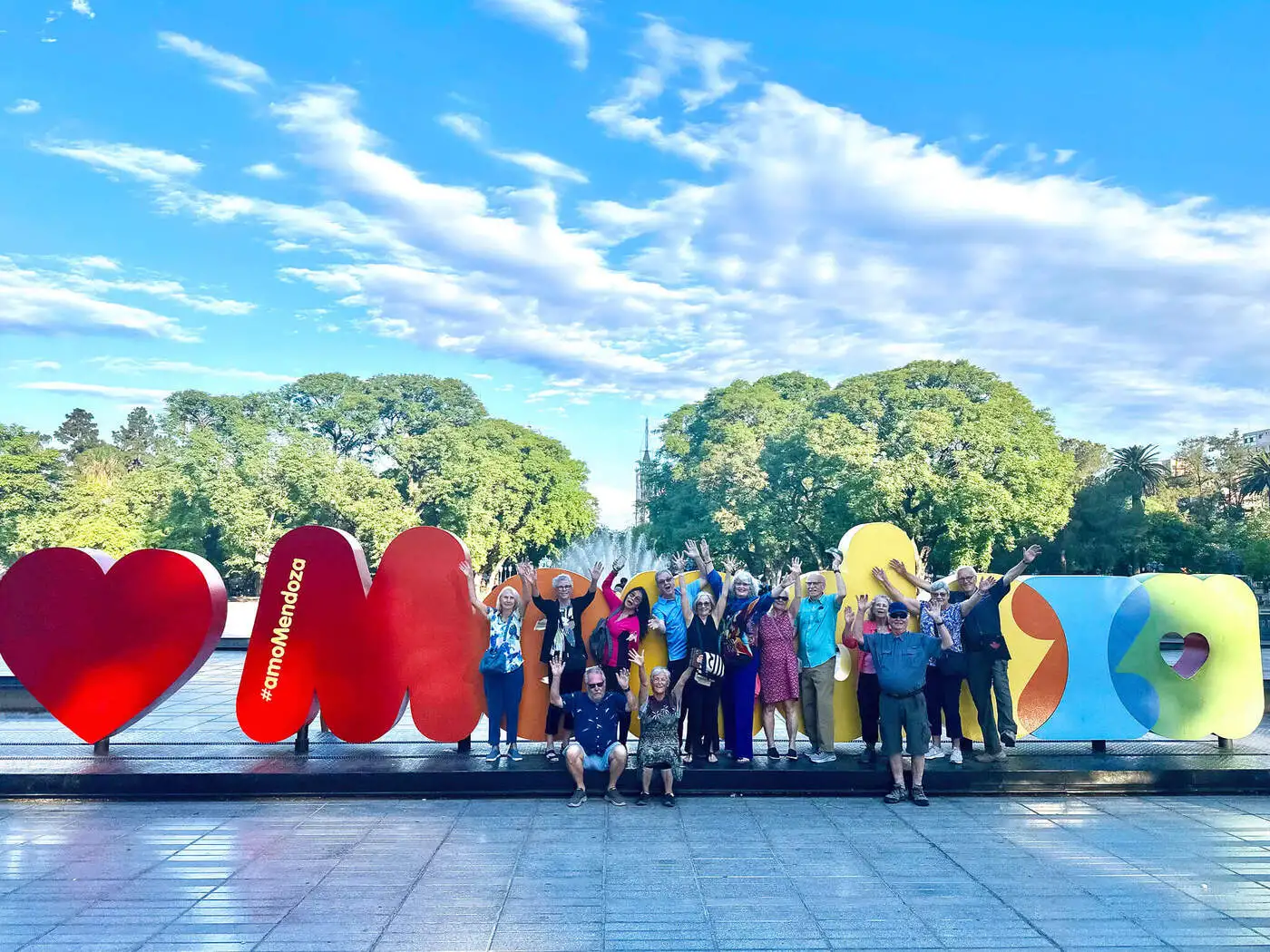
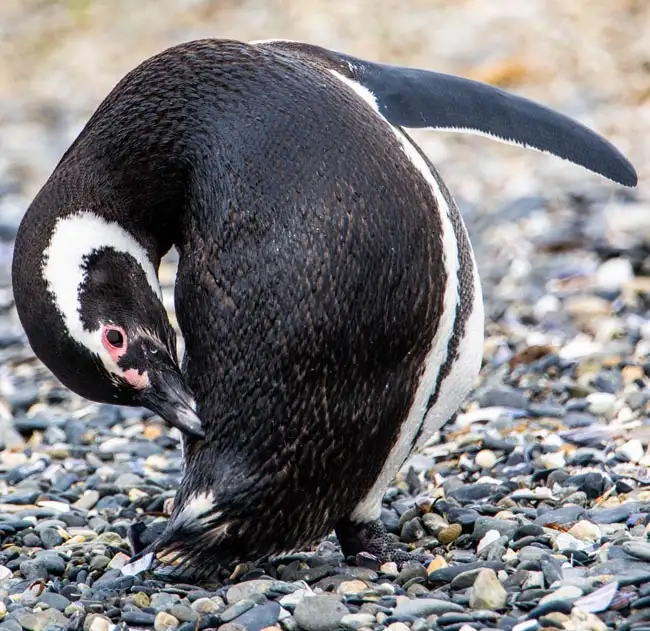
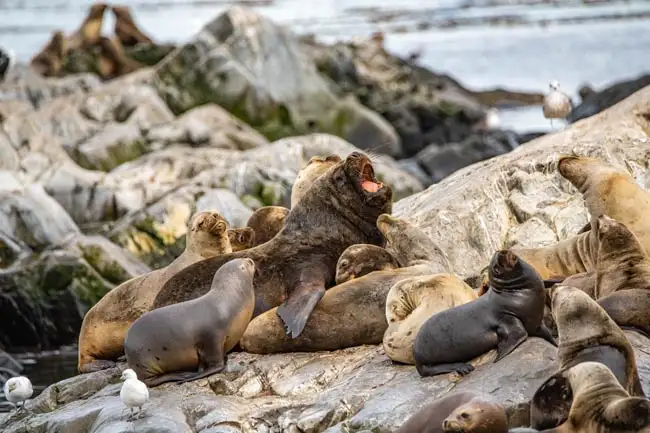

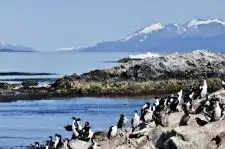
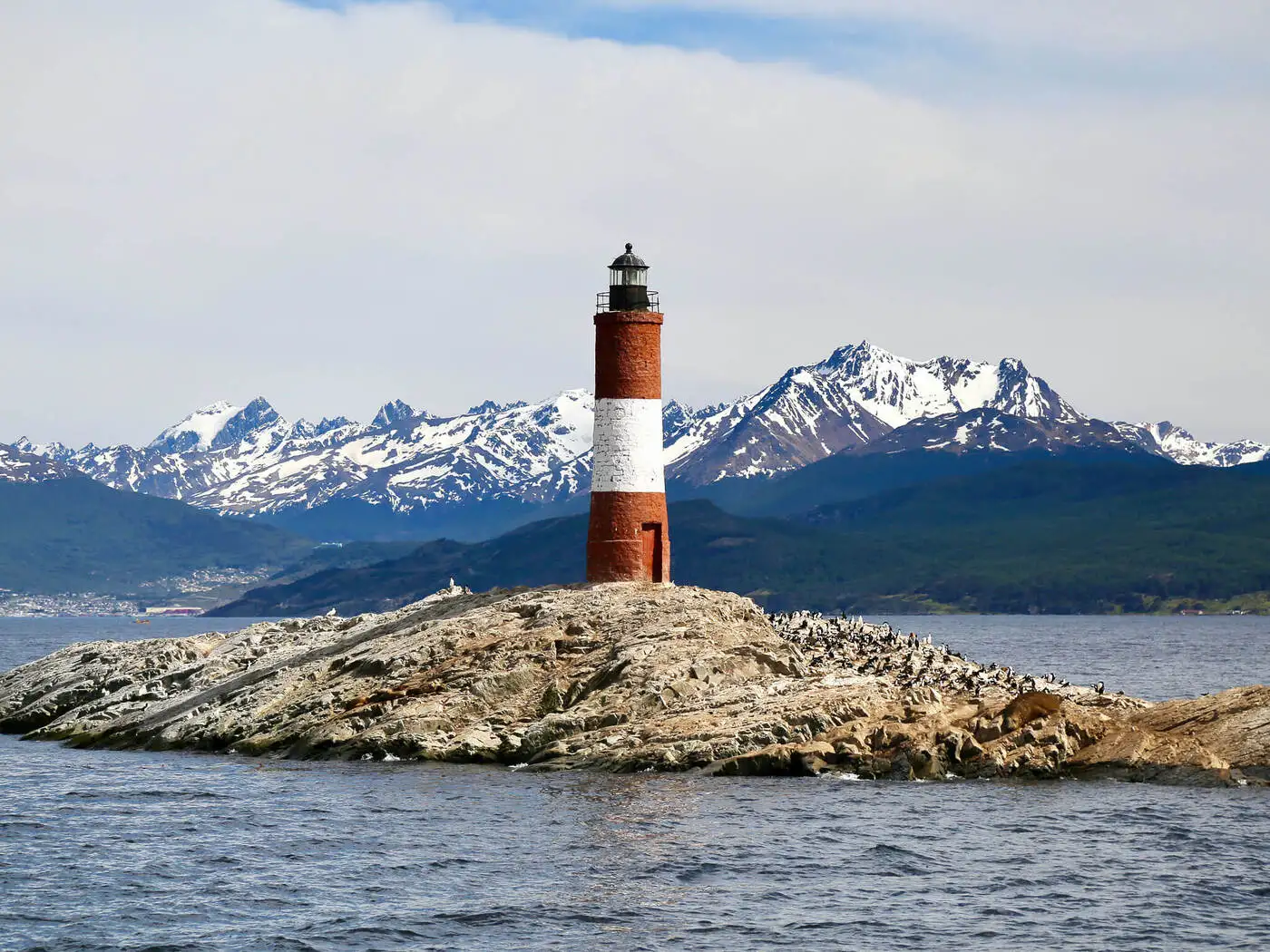
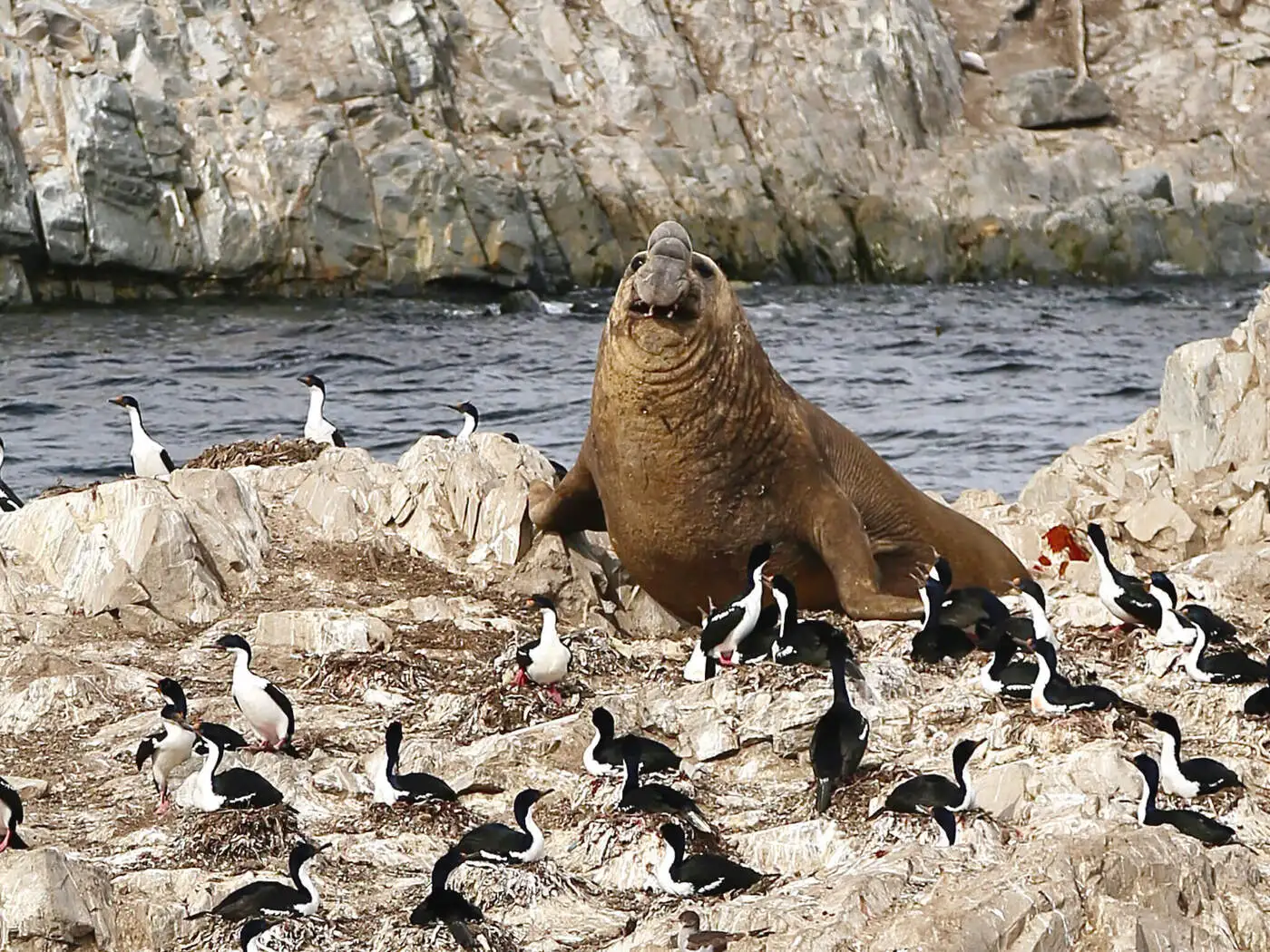
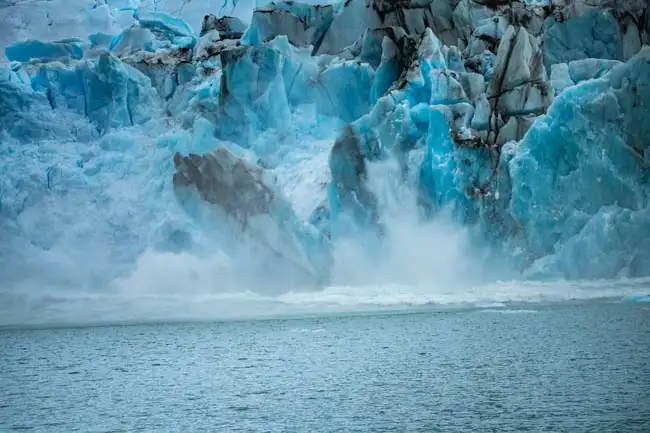

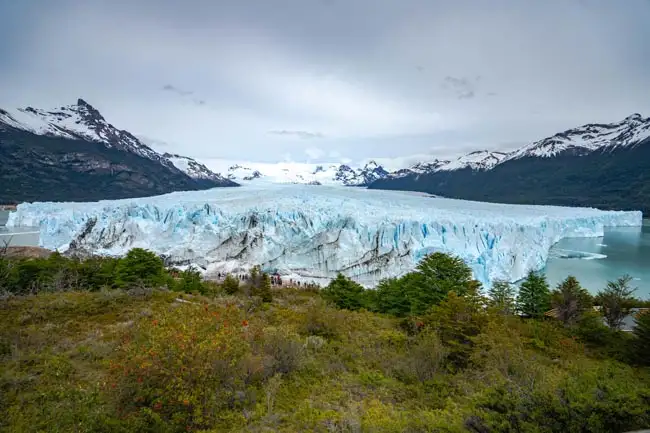
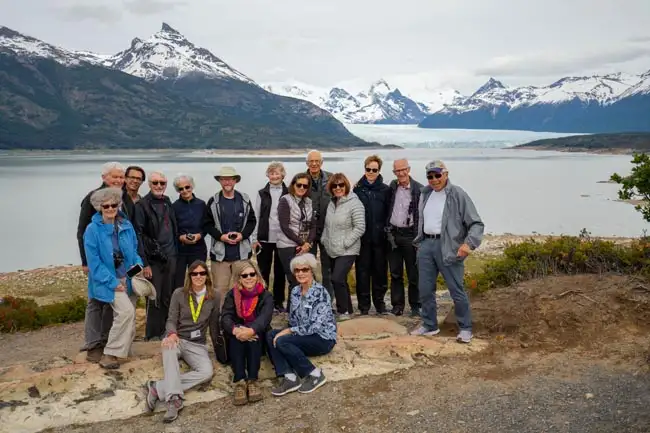
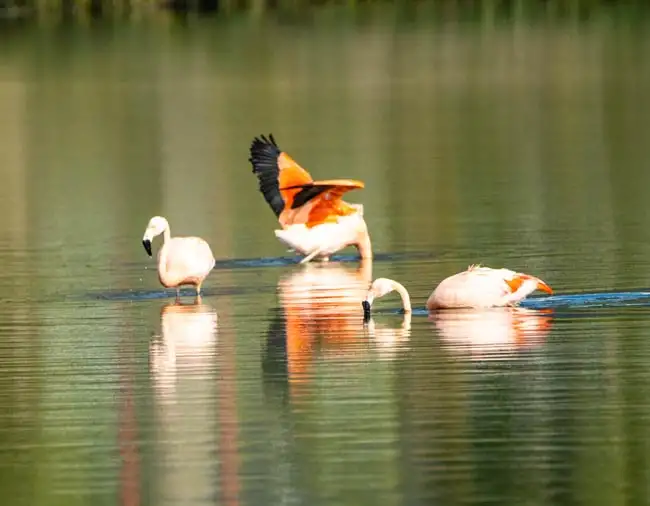
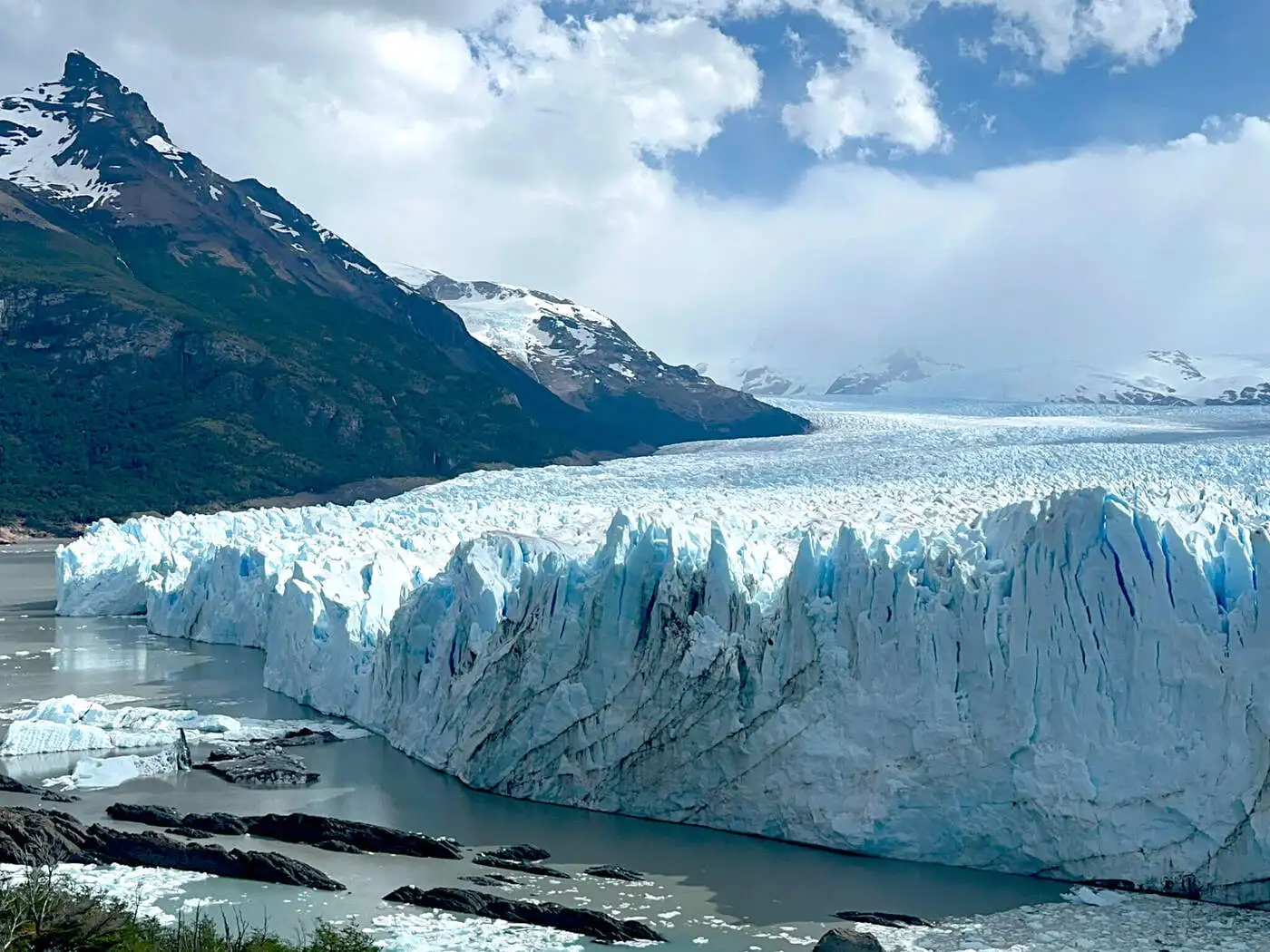
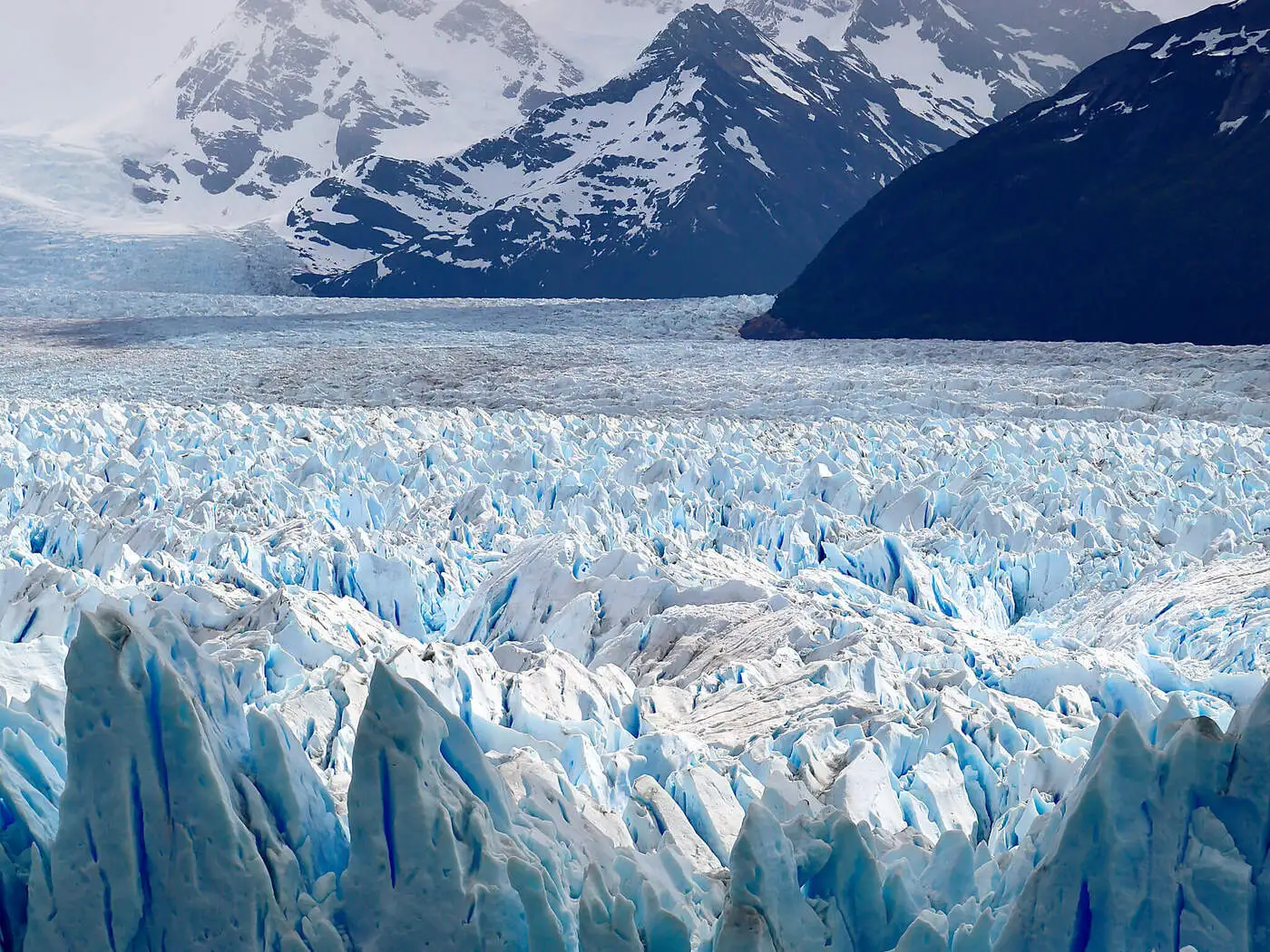
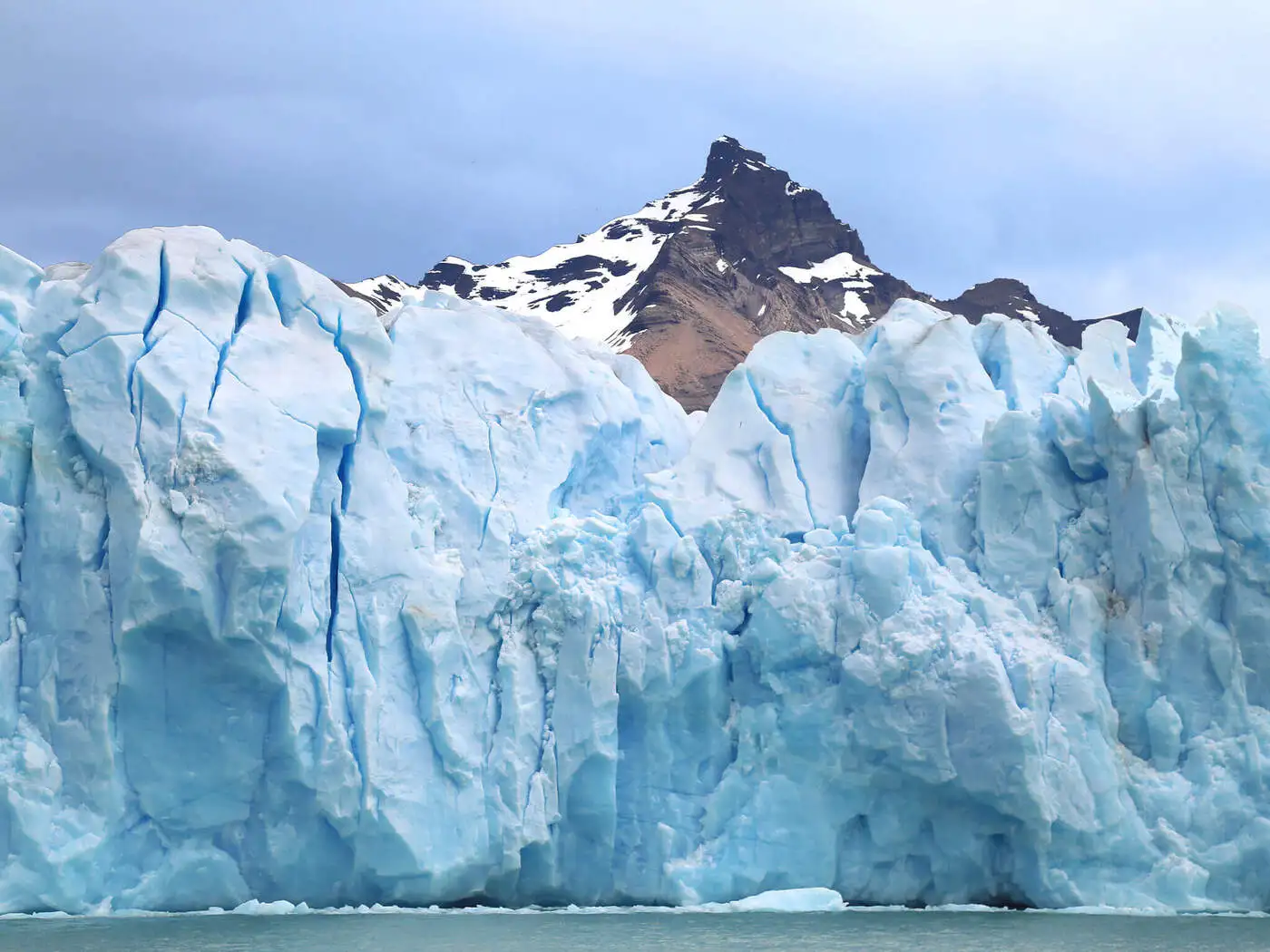
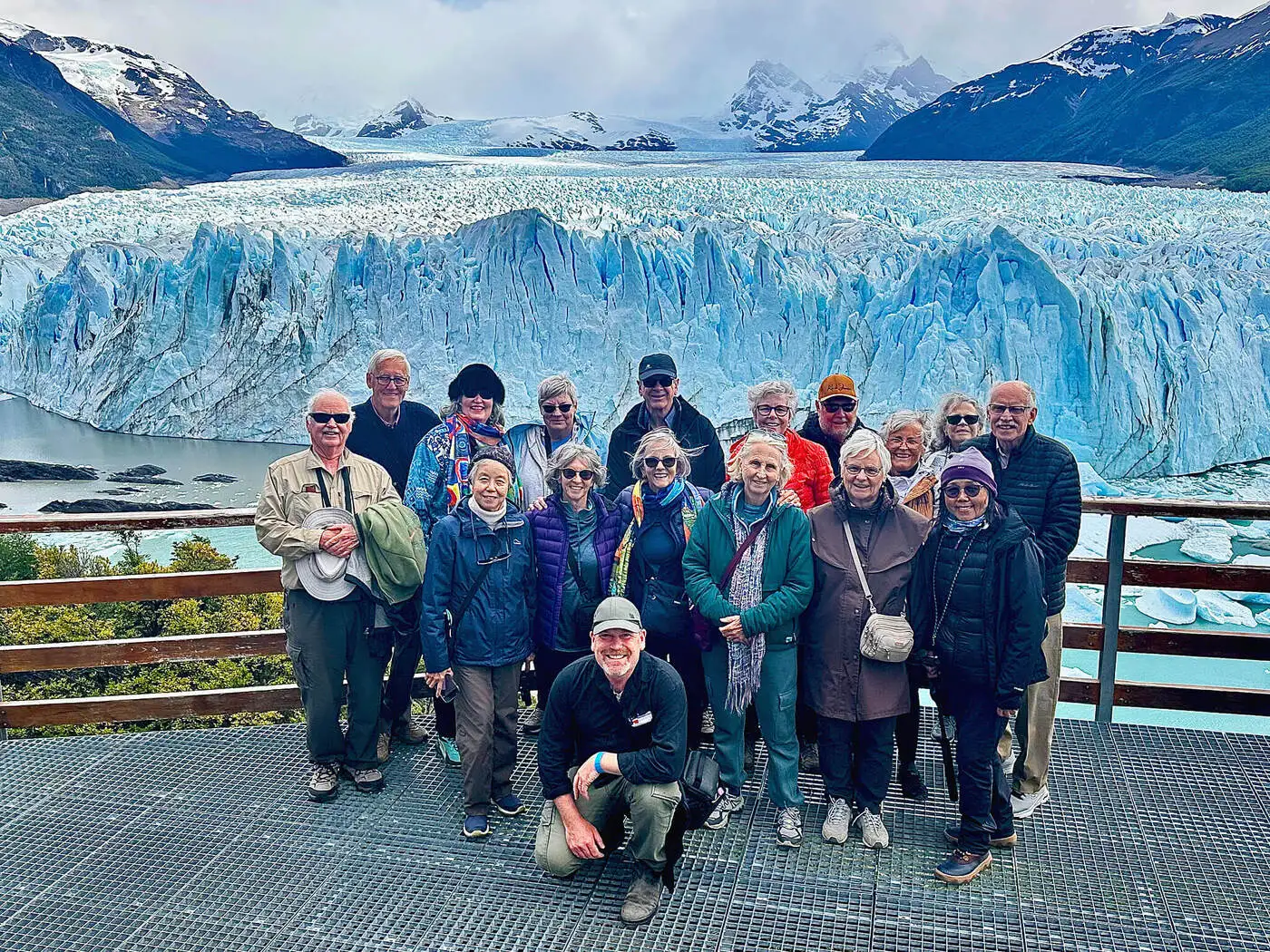
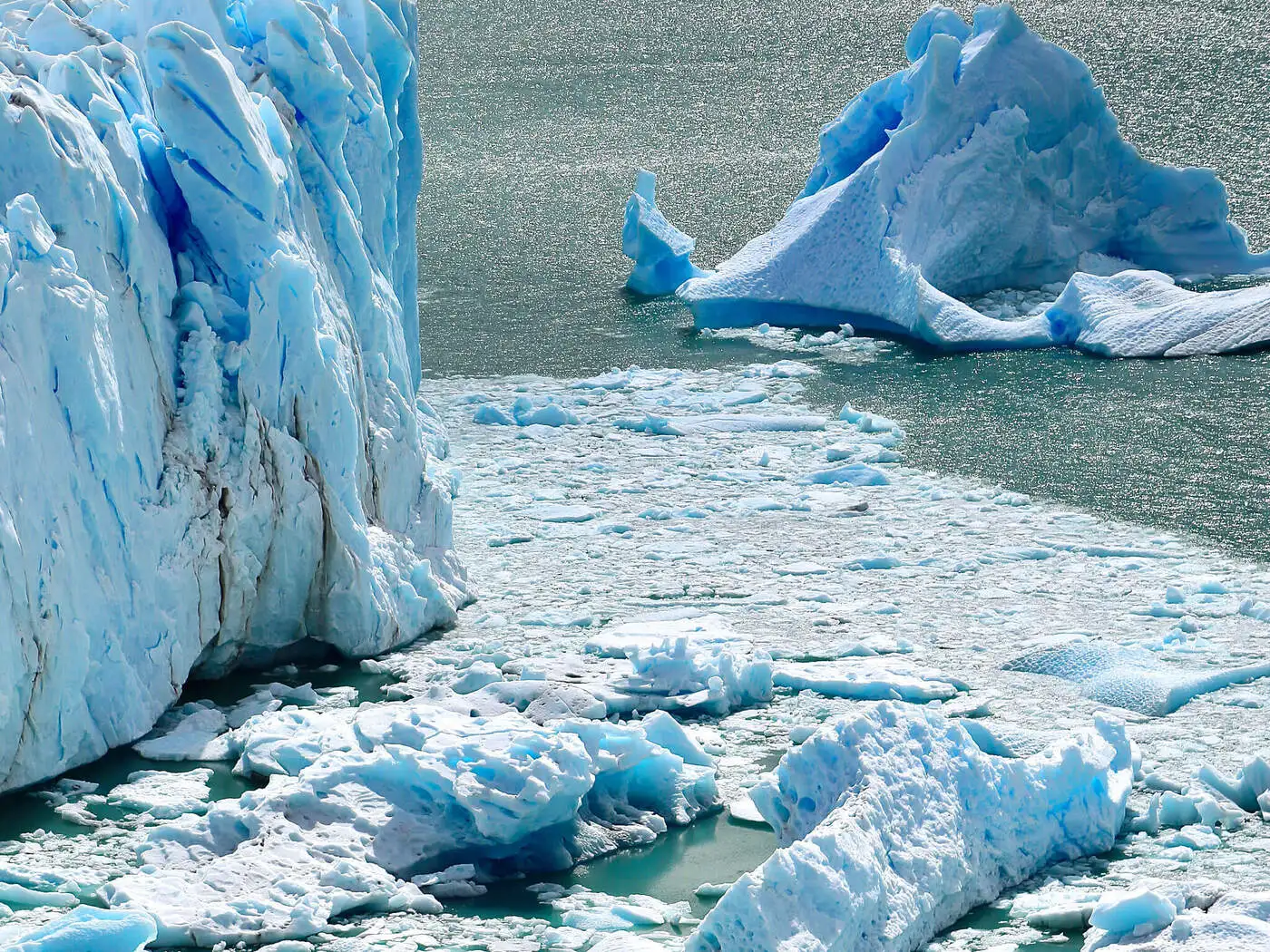
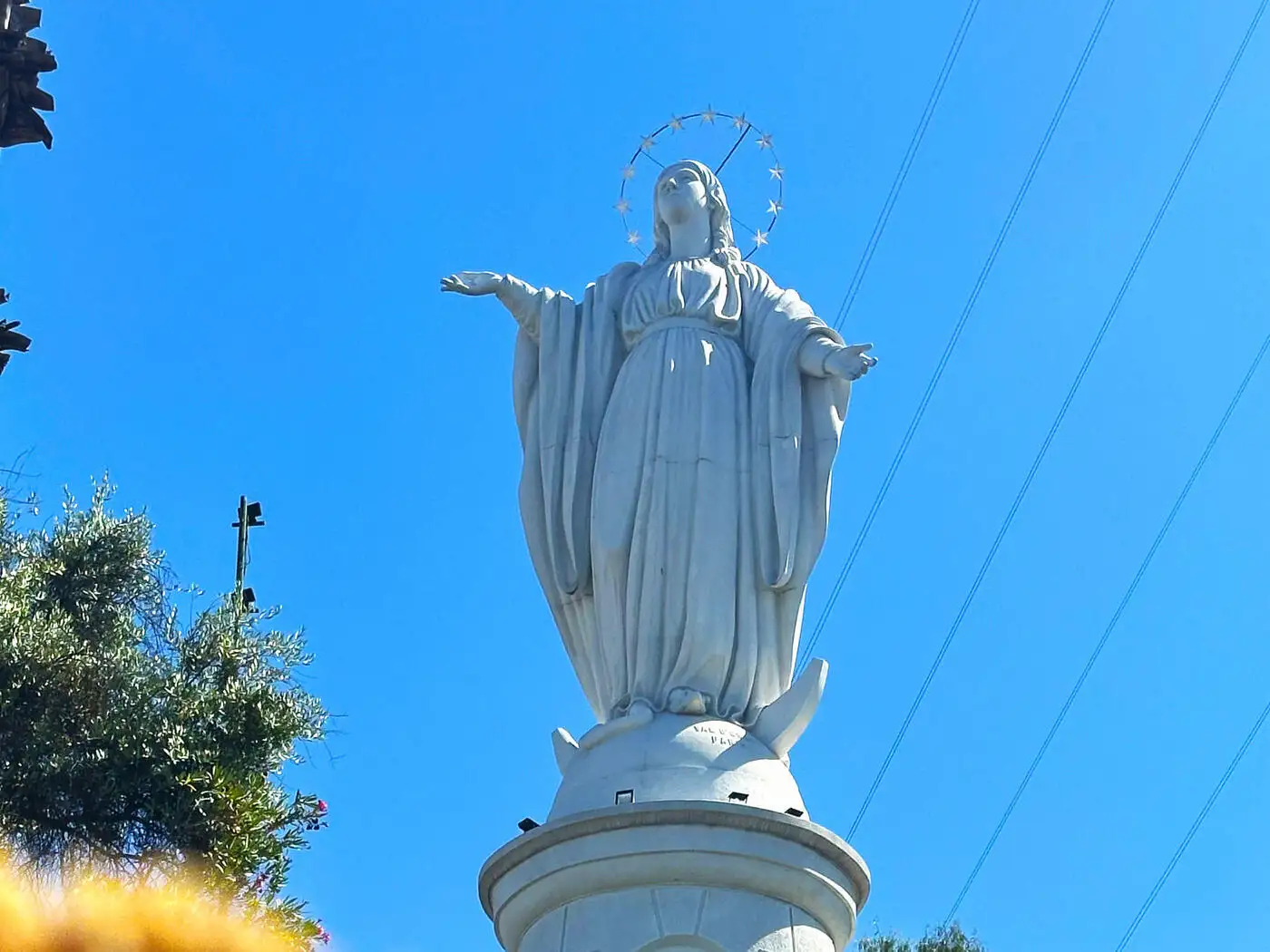
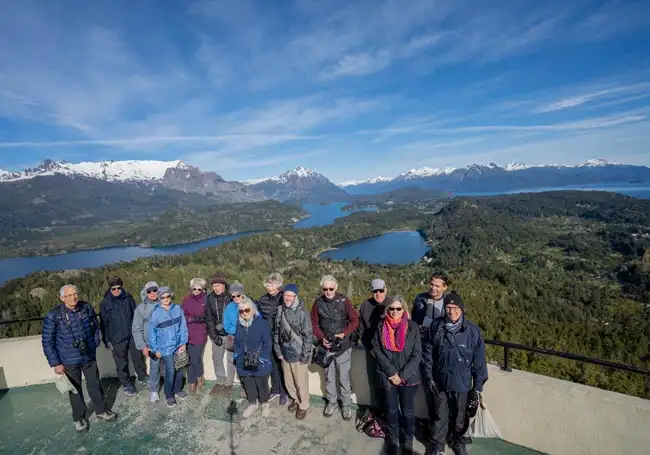
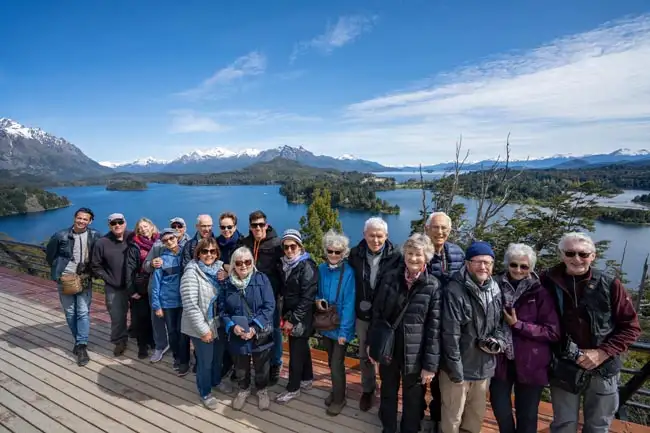
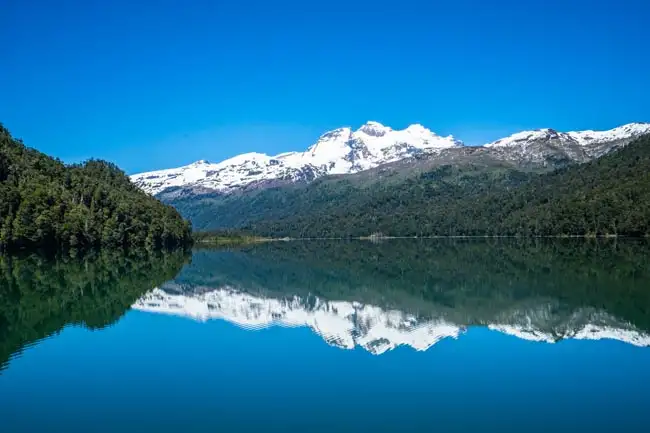
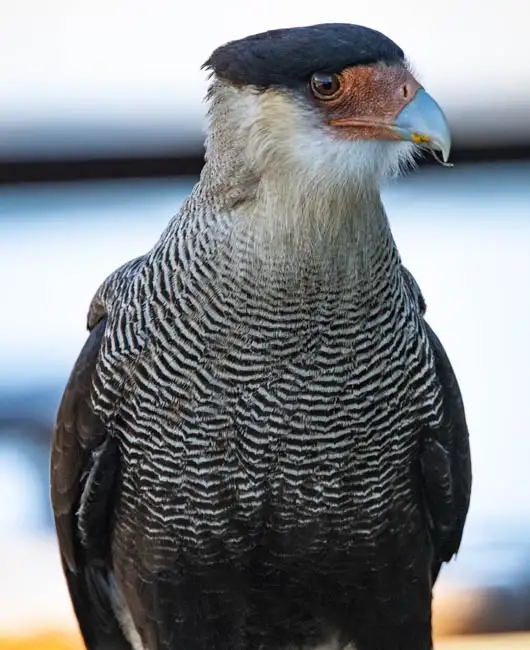
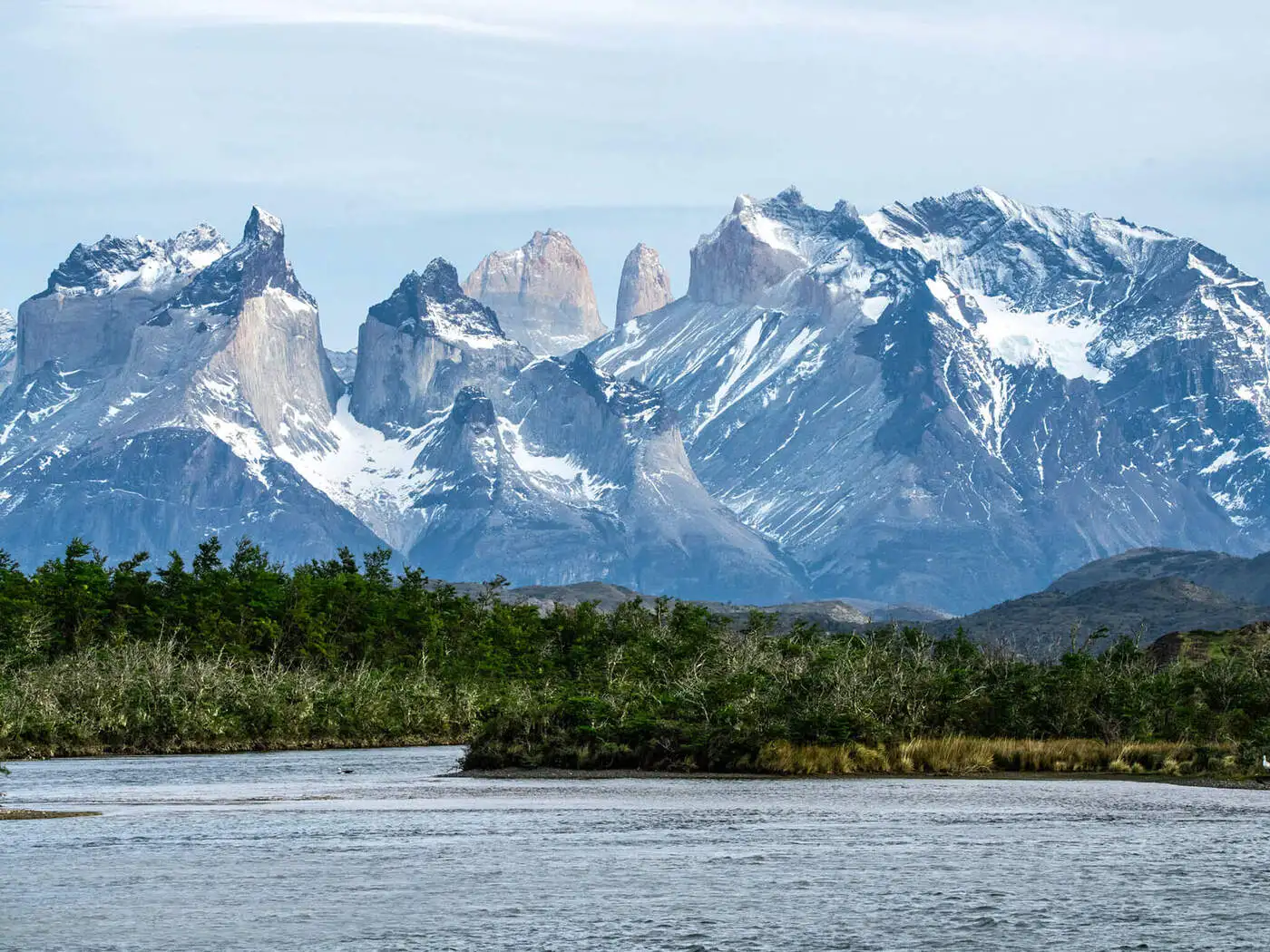
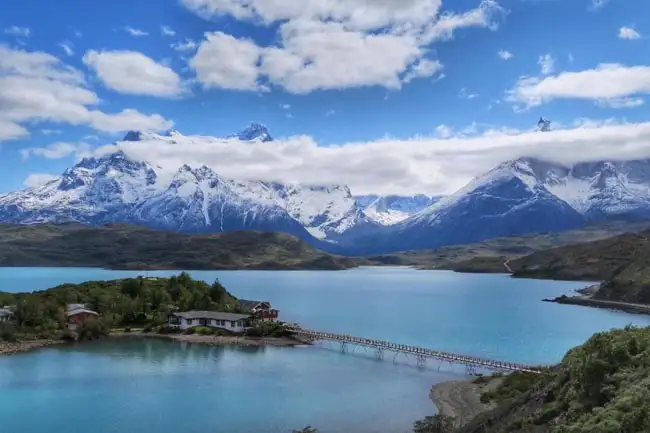
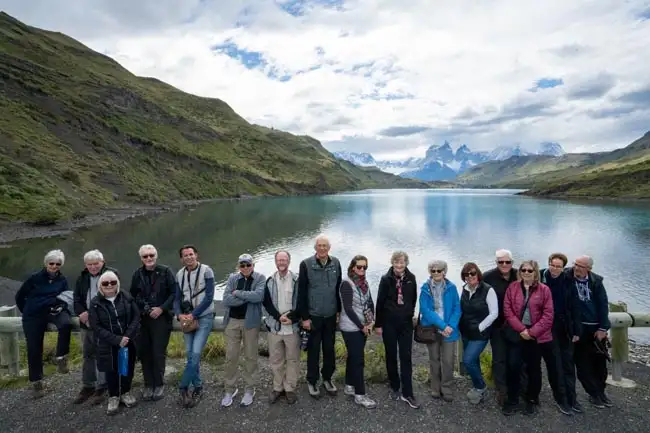
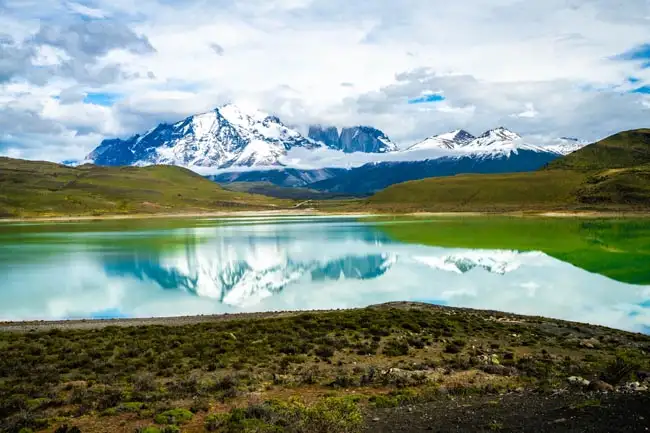
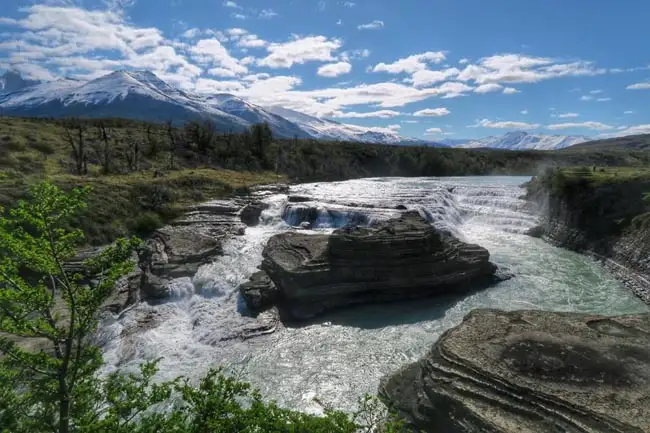
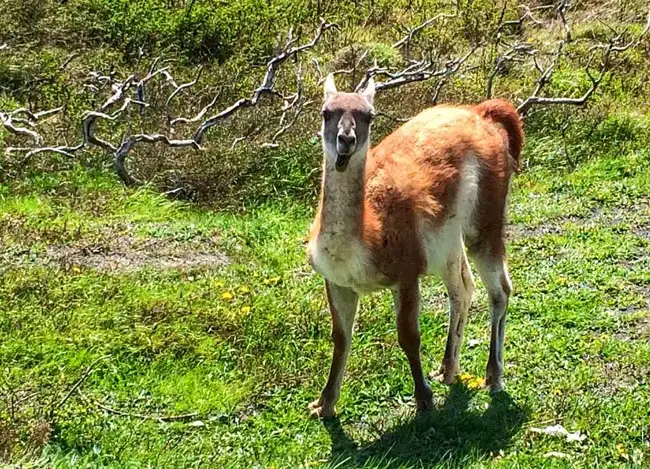
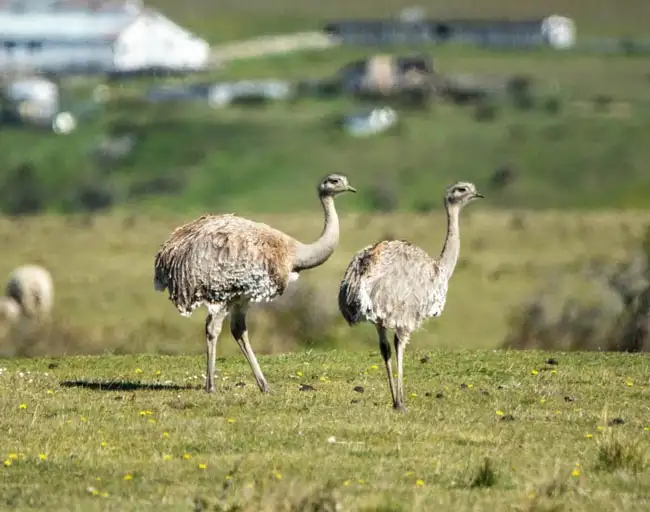

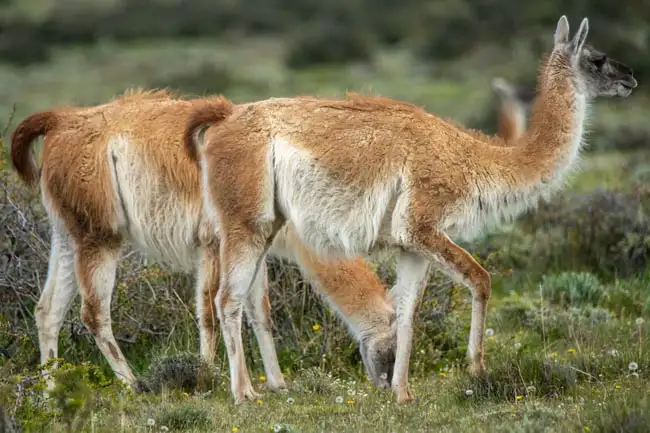
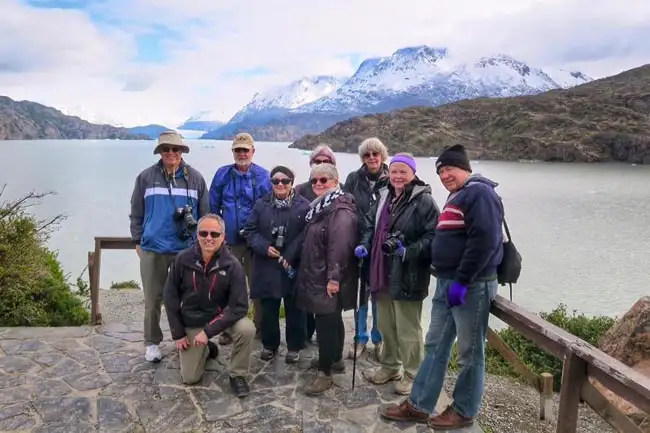
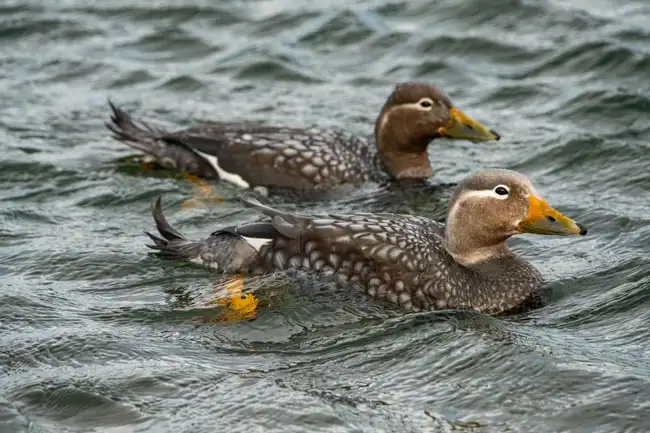
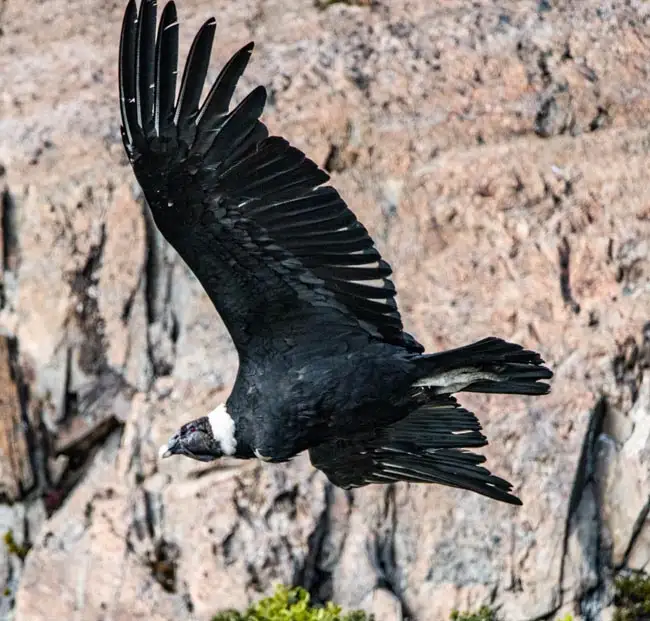
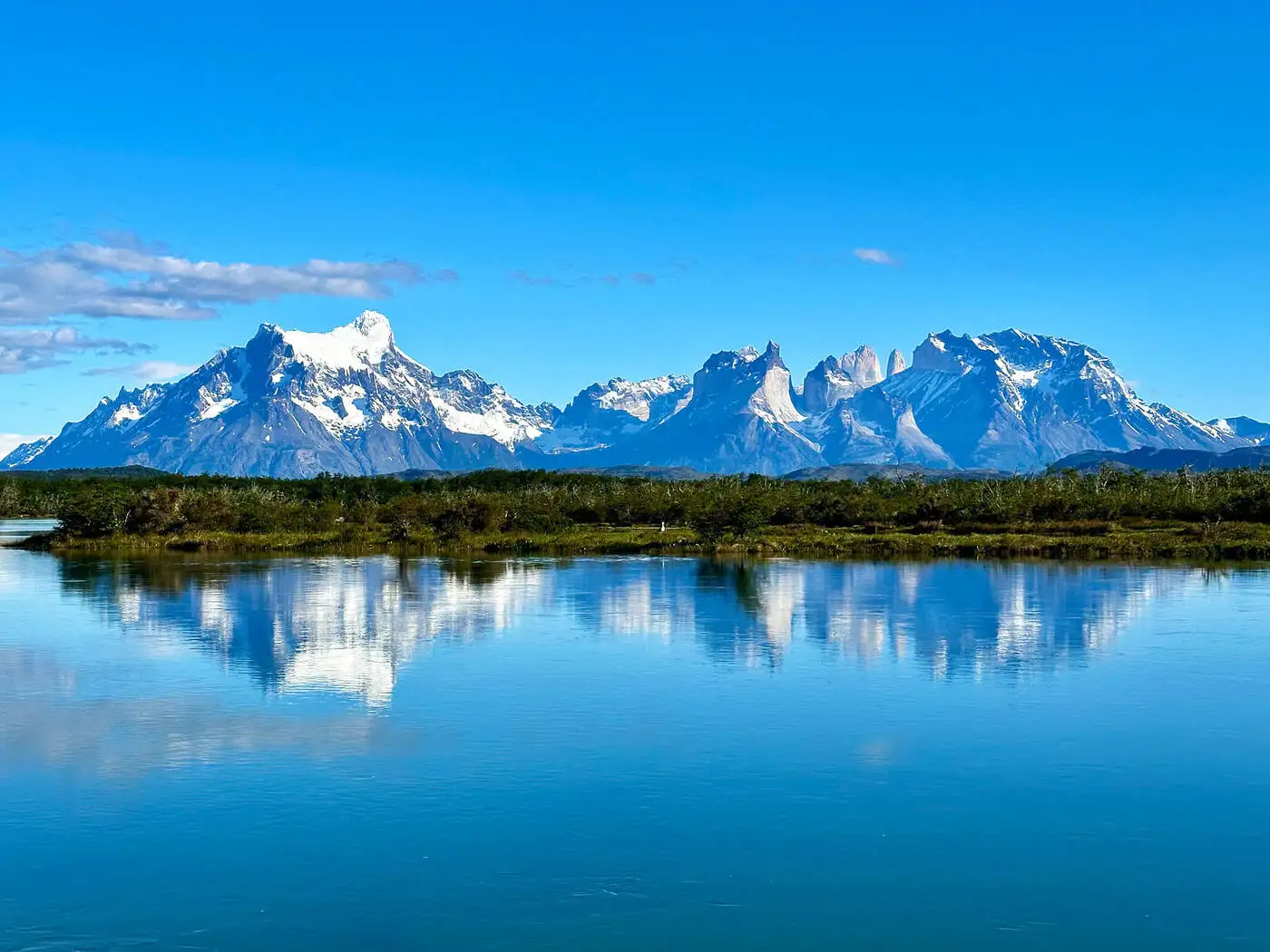
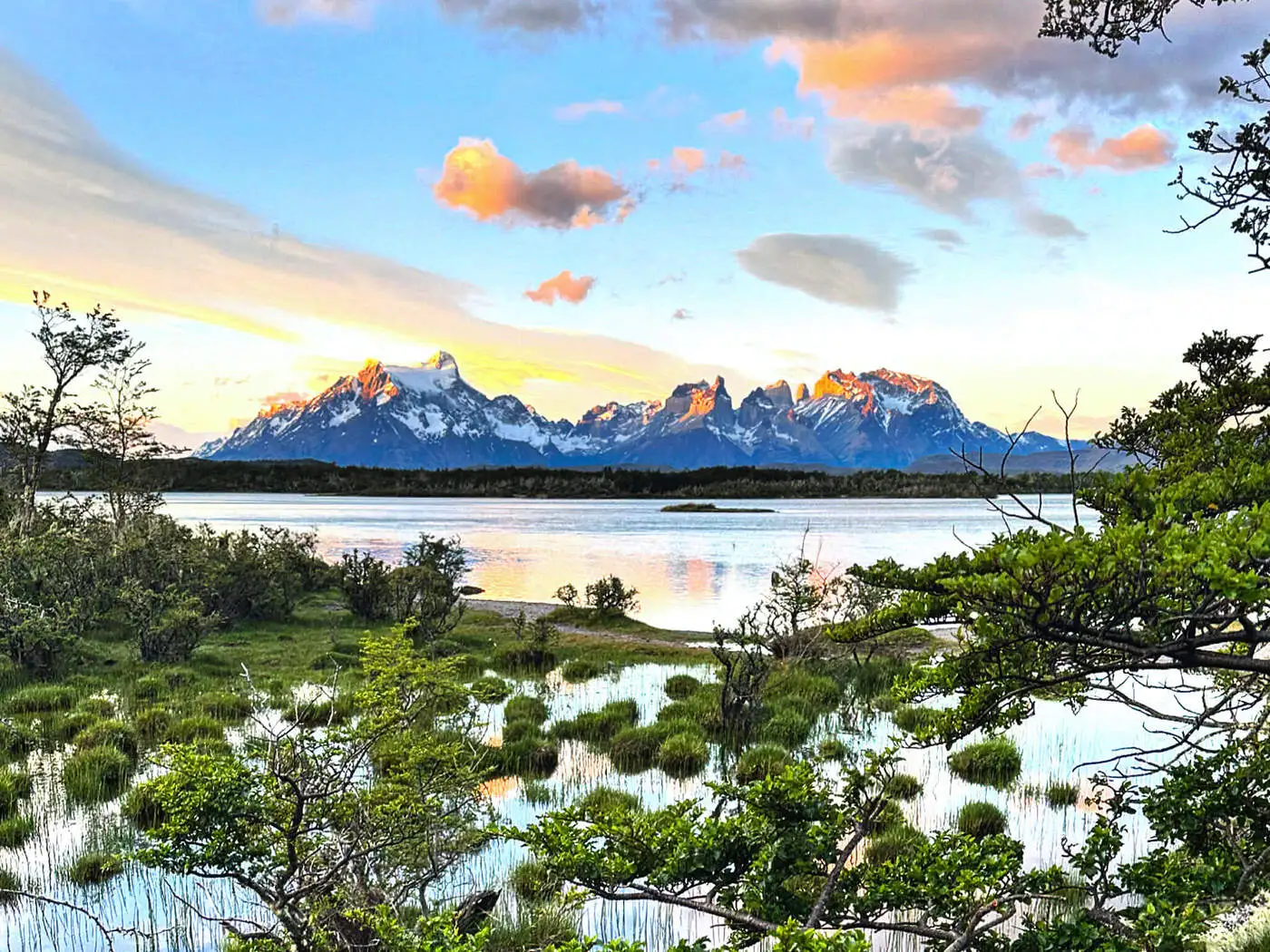
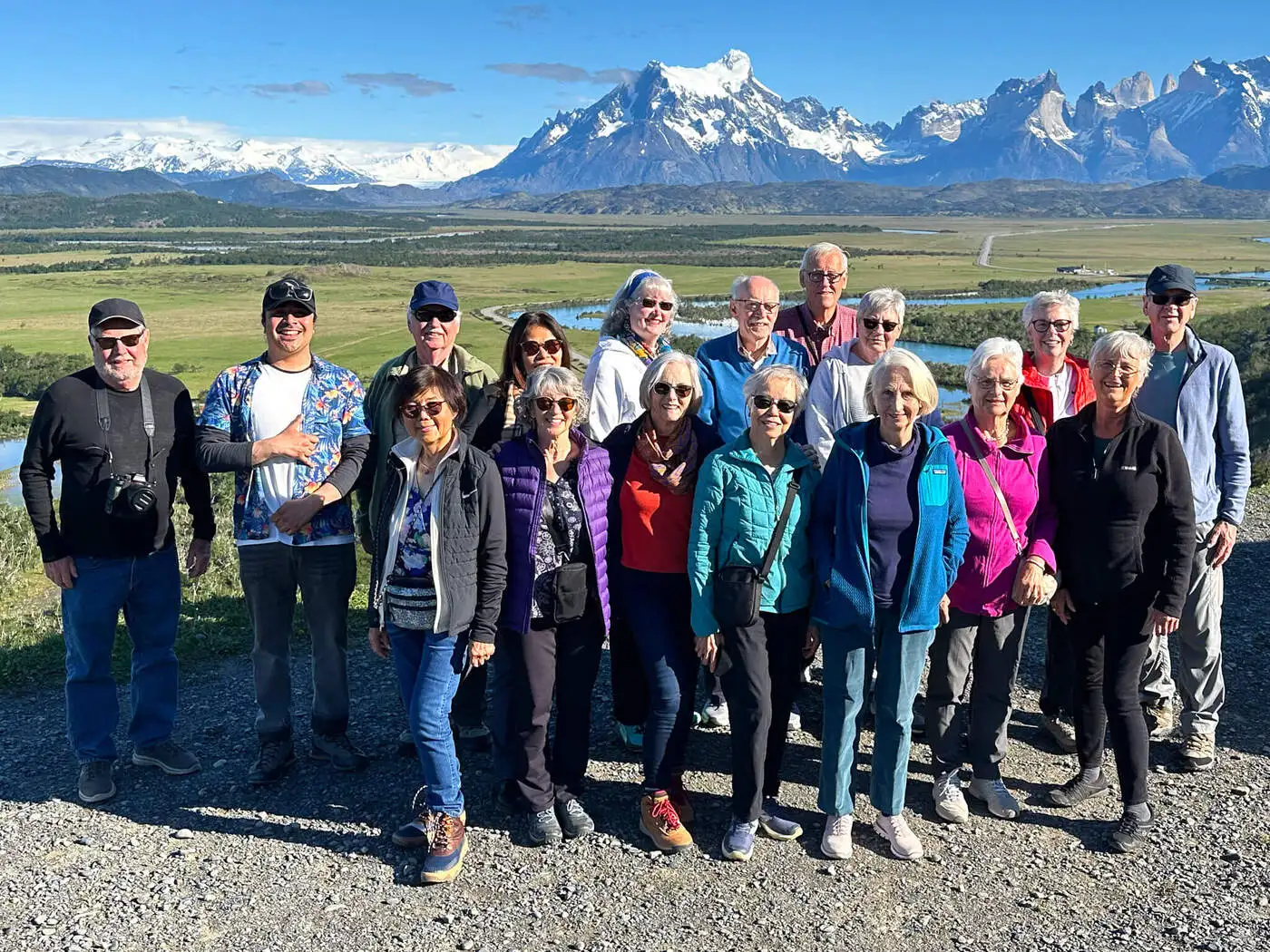
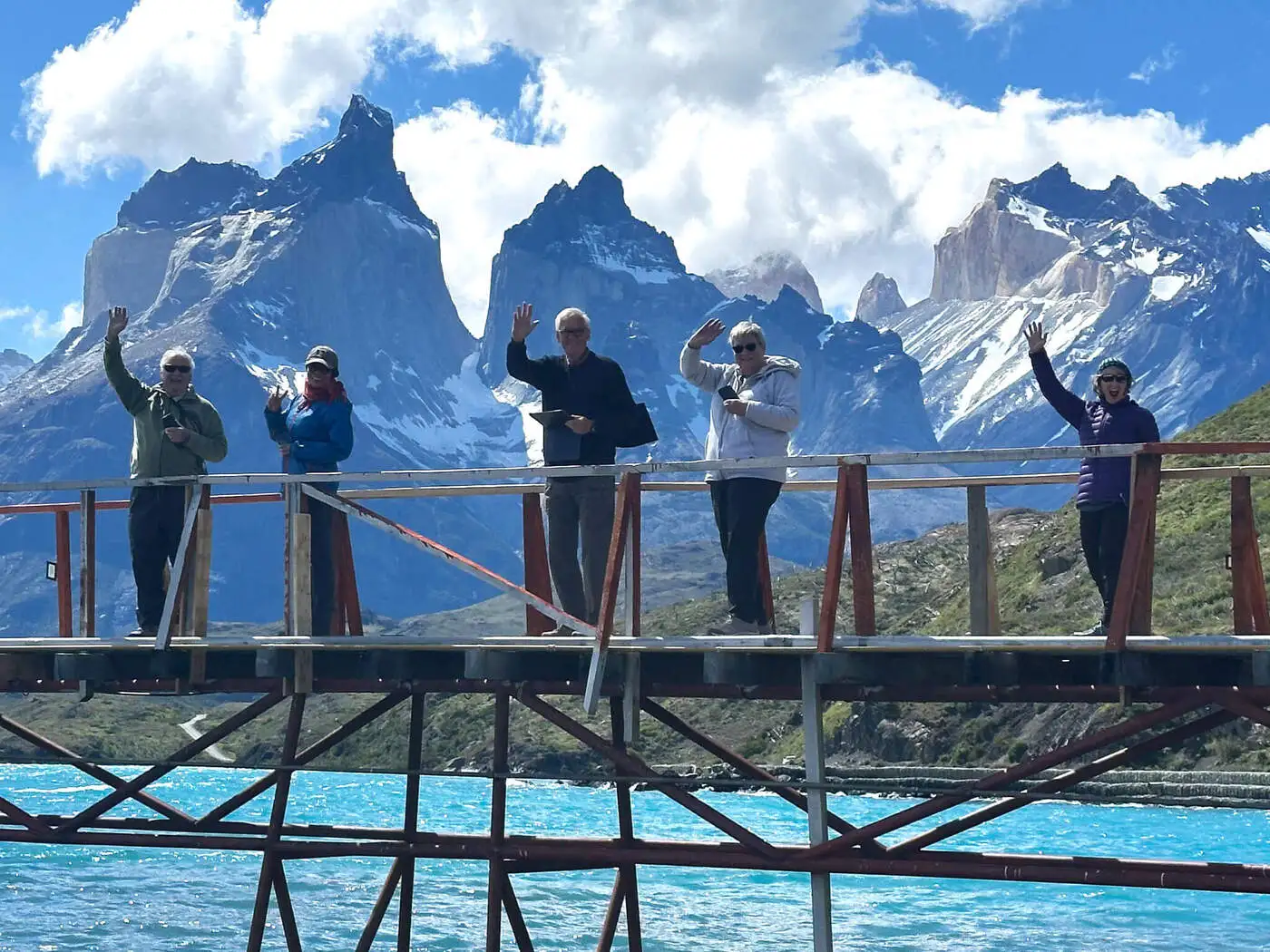
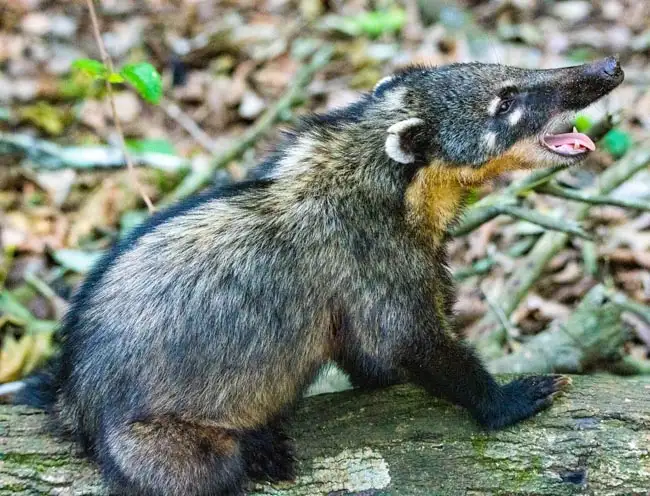
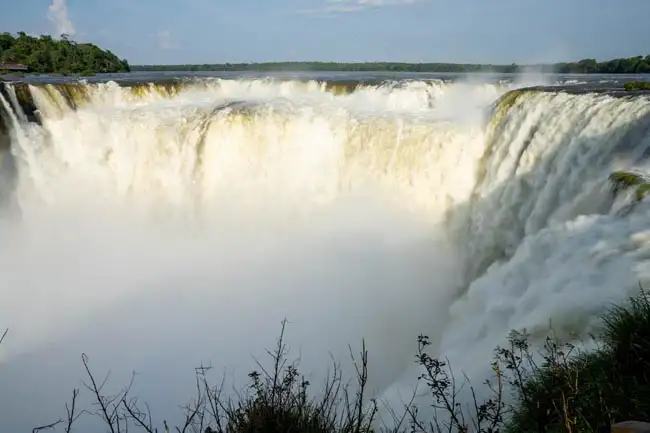
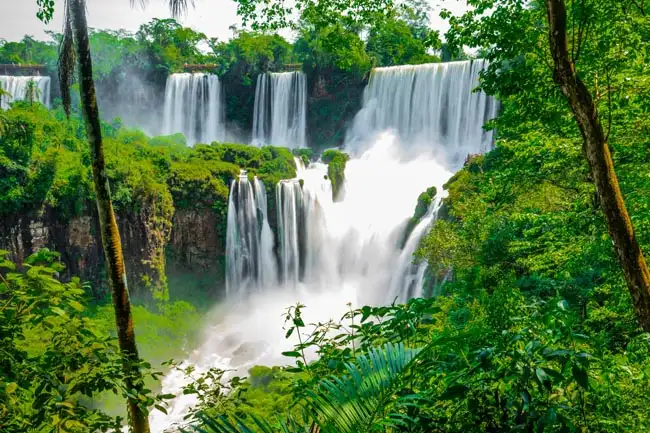
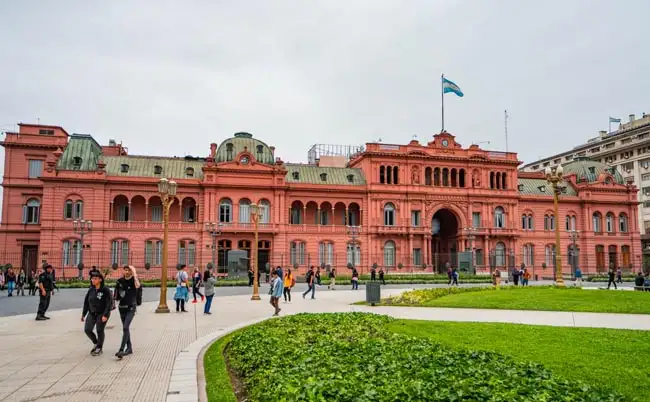
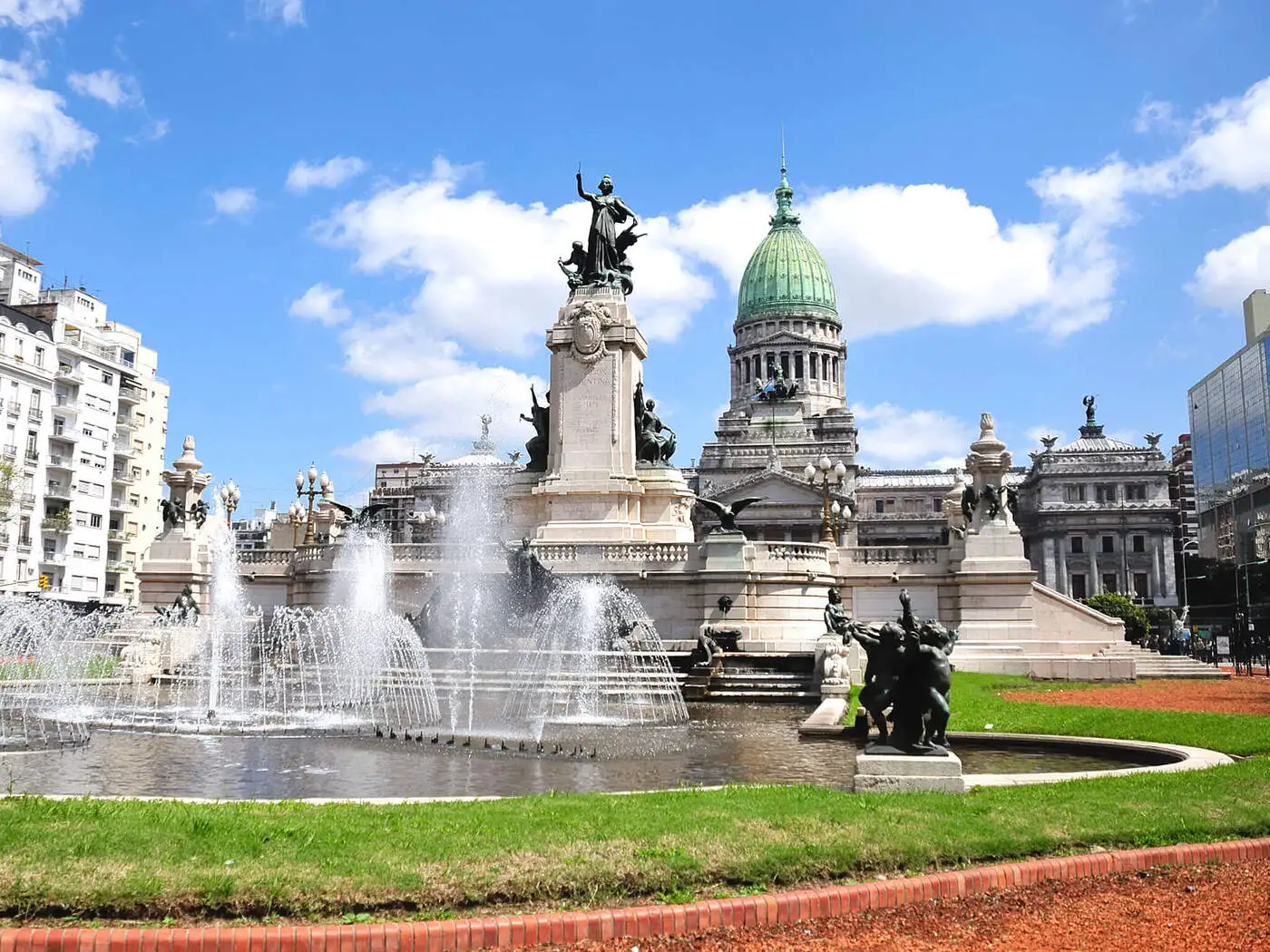
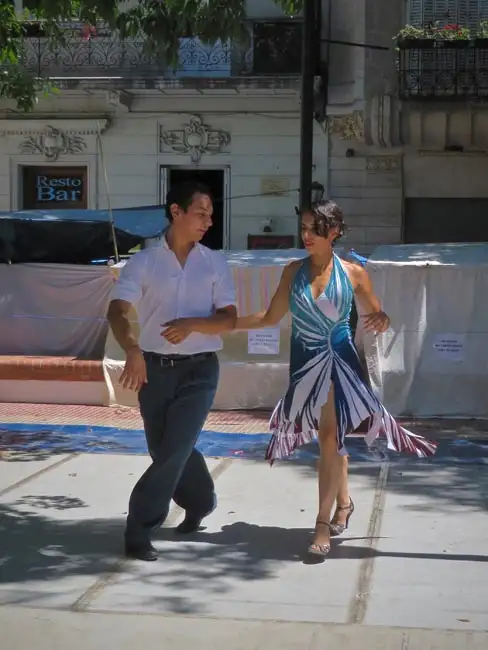
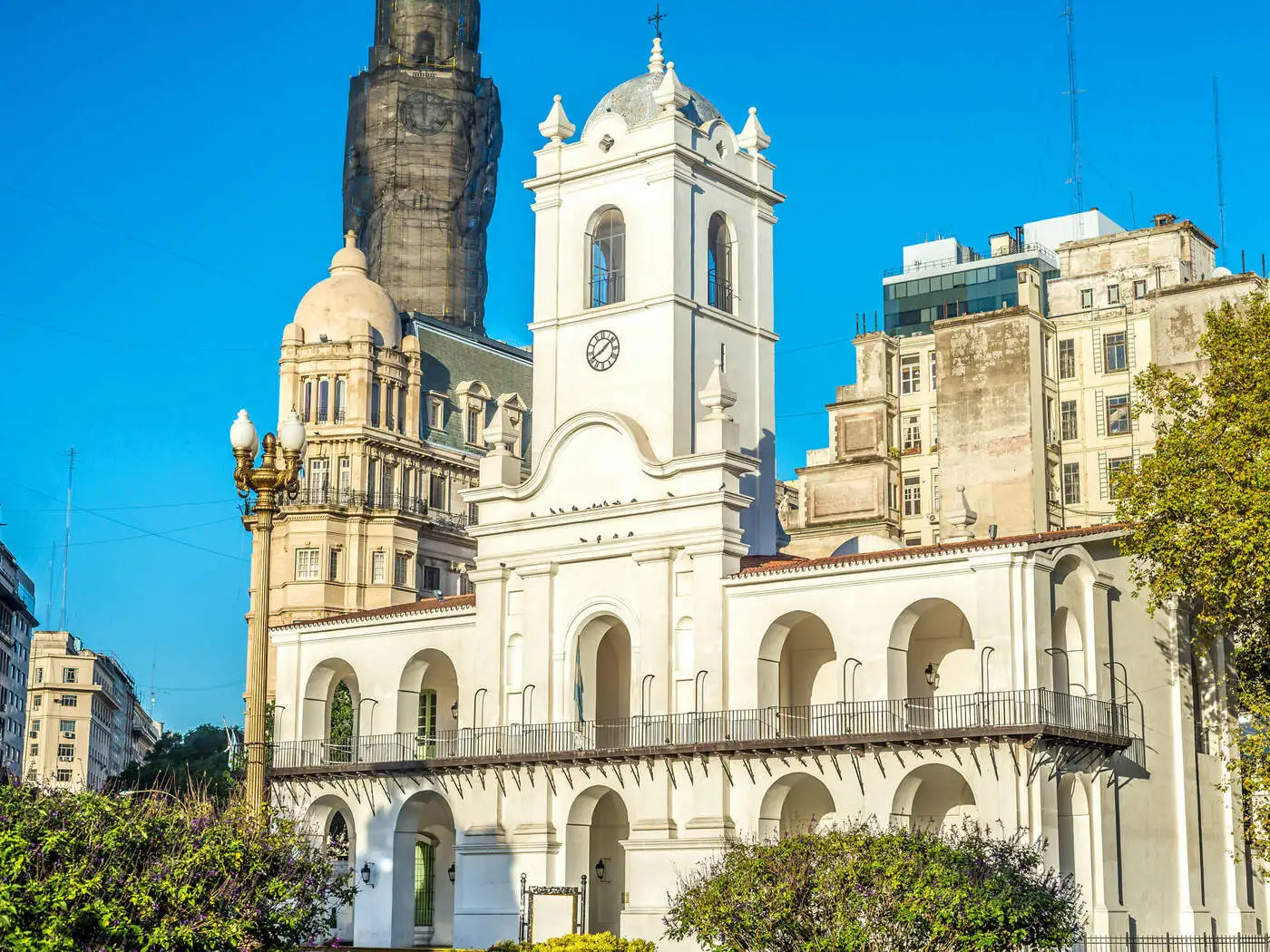
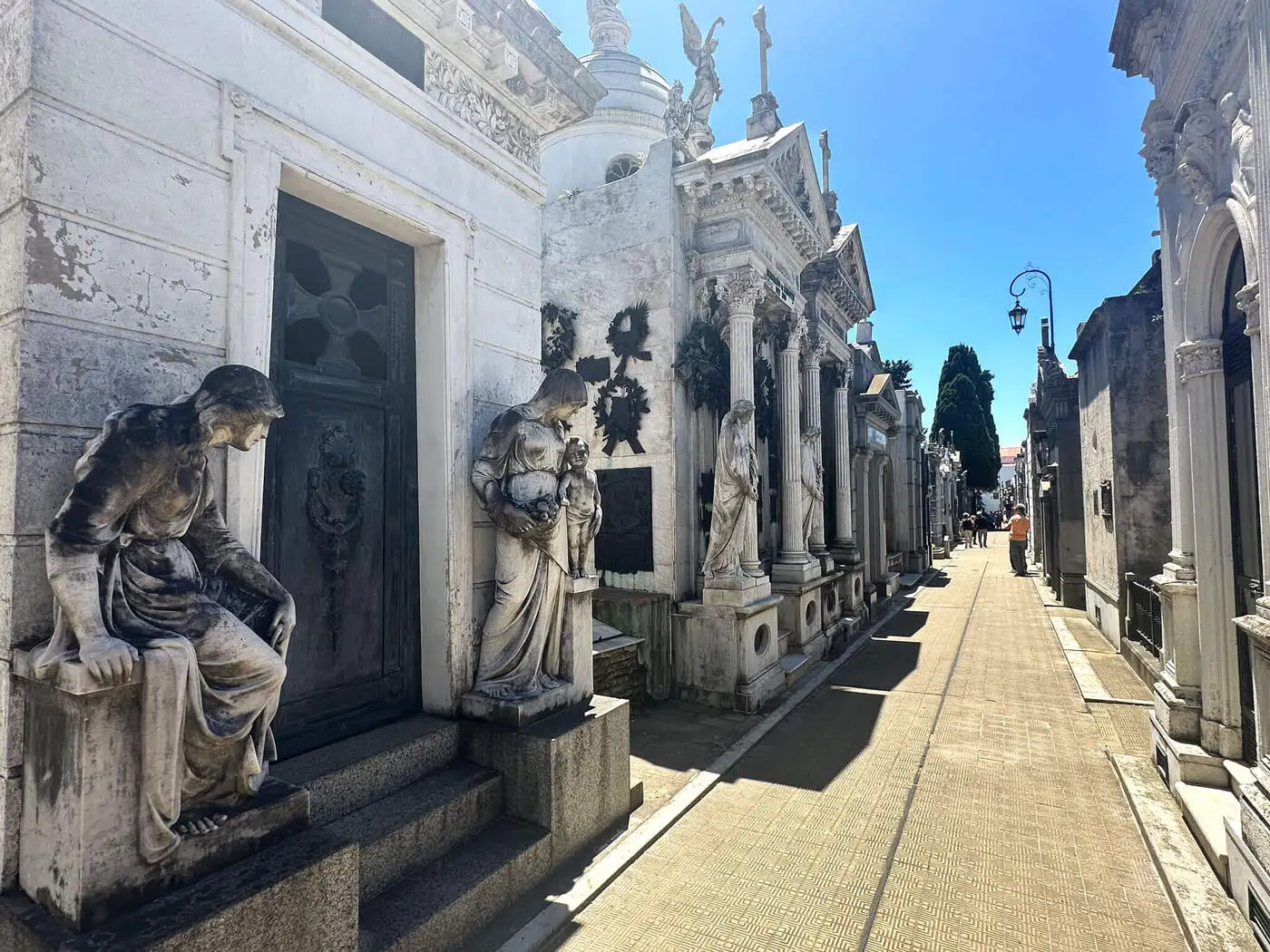
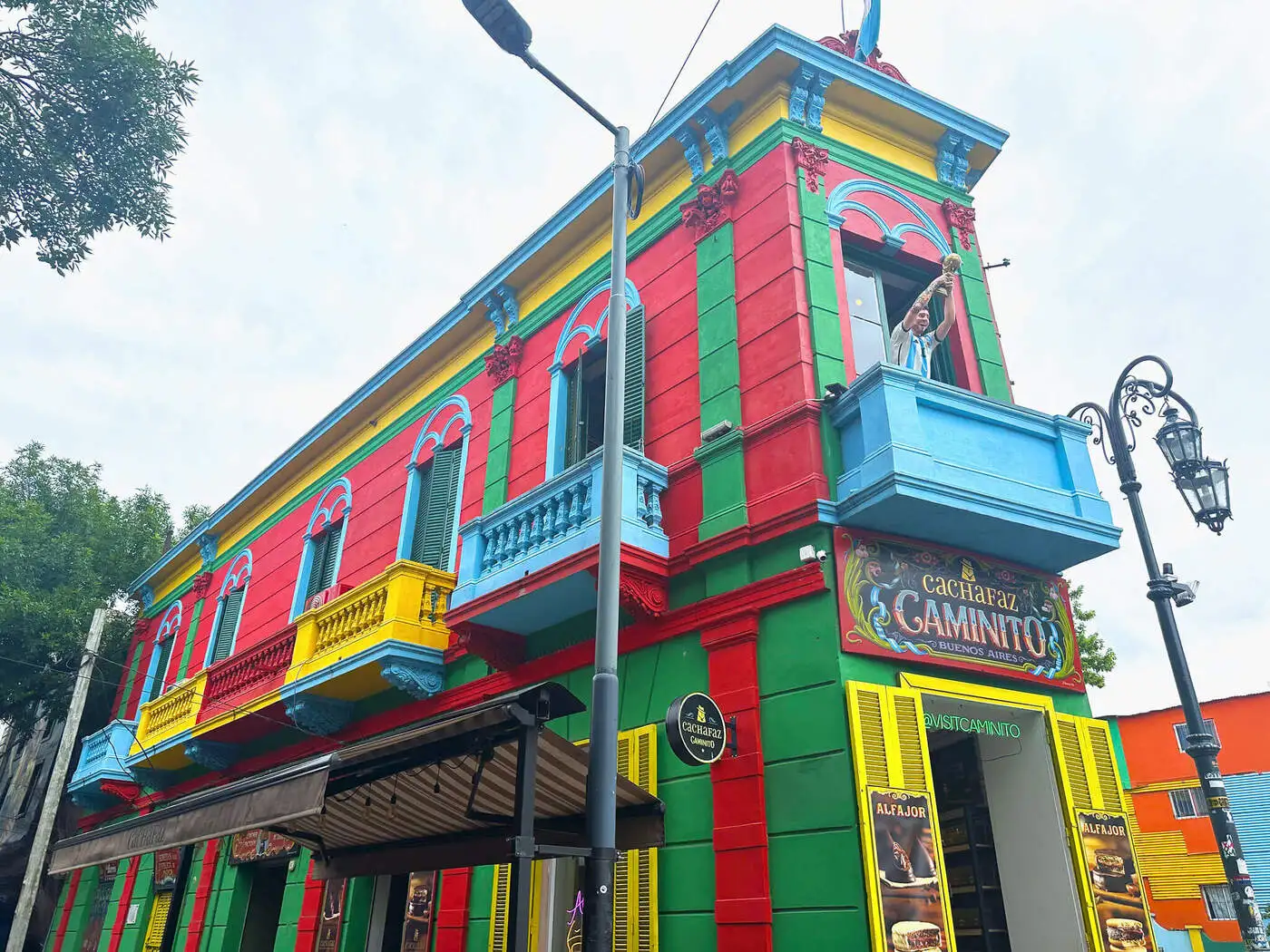
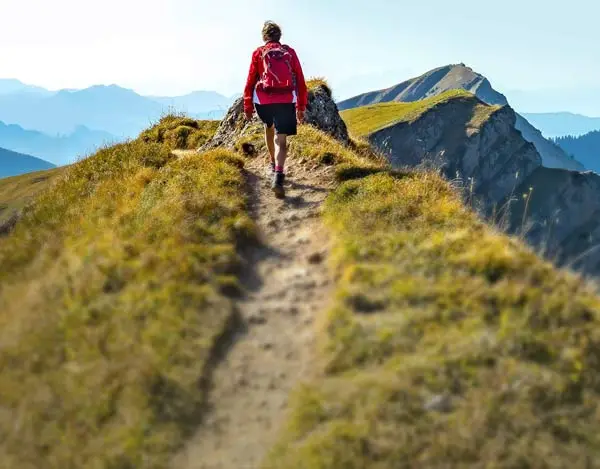
Book This Tour
- Final payment: Due 90 days prior to departure.
- Deposit: A non-refundable $1000 USD Deposit is required at booking.
- Internal Flight Taxes: An extra $593 USD applies for taxes and fees on tour flights. The internal airfares are included, but taxes are listed separately as they may change. Exceptions are noted in Red.
- Optional Single Supplement: $2650 USD (number of singles limited).
(View options forsingle travellers) - In order to secure internal air tickets, an additional pre-payment of $1500 per person is due upon "guarantee," after which your deposit and pre-payment become 100% non-refundable/non-transferrable
Prices below are per person, twin-sharing costs in US Dollars (USD). Pricing does not include airfare to/from the tour and any applicable taxes.
Tourcode: CL3
Frequently Asked Questions
- What is the maximum number of participants on a trip?Most of our tours carry a maximum of 18 participants; some tours (ie hiking tours) top out at 16. In the event that we do not achieve our minimum complement by our 90-day deadline, we may offer group members the option of paying a "small-group surcharge" as an alternative to cancellation. If all group members agree, we will confirm the trip at existing numbers; this surcharge is refundable in the event that we ultimately achieve our regular minimum. If the small group surcharge is not accepted, we will offer a refund of your deposit or a different trip of your choice.
- Can I extend my tour either at the beginning or end? What about stopovers?Yes, you can extend your tour either at the beginning or the end and we can book accommodation in our tour hotel. Stopovers are often permitted, depending on air routing. Stopovers usually carry a "stopover" fee levied by the airline.
- How do I make a reservation? How and when do I pay?The easiest way to make a reservation is via our website; during office hours, you are also more than welcome to contact us by telephone.
A non-refundable deposit is payable at the time of booking; if a reservation is made within 90 days, full payment is required. Some trips require a larger deposit. If international airline bookings require a non-refundable payment in order to secure space or the lowest available fare, we will require an increase in deposit equal to the cost of the ticket(s).
Early enrolment is always encouraged as group size is limited and some trips require greater preparation time.
Once we have received your deposit, we will confirm your space and send you a confirmation package containing your trip itinerary, any visa/travel permit related documents, invoice, clothing and equipment recommendations, general information on your destination(s), and forms for you to complete, sign and return to us. Your air e-tickets (if applicable), final hotel list, final trip itinerary, and instructions on how to join your tour, will be sent approximately 2-3 weeks prior to departure. - What about cancellations, refunds, and transfers?Please review our cancellation policy page for details.
- I am a single who prefers my own room. What is a single supplement?All of our tours have a single supplement for those who want to be guaranteed their own room at each location.
This supplement is a reflection of the fact that most hotels around the world do not discount the regular twin-share rate for a room by 50% for only one person occupying a room. Most hotels will give a break on the price, but usually in the range of 25-30% of the twin-share rate. This difference, multiplied by each night, amounts to the single supplement.
The conventional amount can also vary from country to country and some destinations are more expensive than others for single occupancy. In order to be "single friendly," the supplements we apply are not a profit centre for us and we do our best to keep them as reasonable as possible.
On most tours we limit the number of singles available, not to be punitive, but rather because many hotels allow for only a limited number of singles; some smaller hotels at remote locations also have a limited number of single rooms available.
Please note that most single rooms around the world are smaller than twin-share rooms and will likely have only one bed. - Do you have a shared accommodation program?Yes! If you are single traveller and are willing to share, we will do our best to pair you with a same-gender roommate. Please note that should we fail to pair you, we will absorb the single supplement fee and you will default to a single room at no extra charge.
